

Rebound Turning Struggles Into WINS
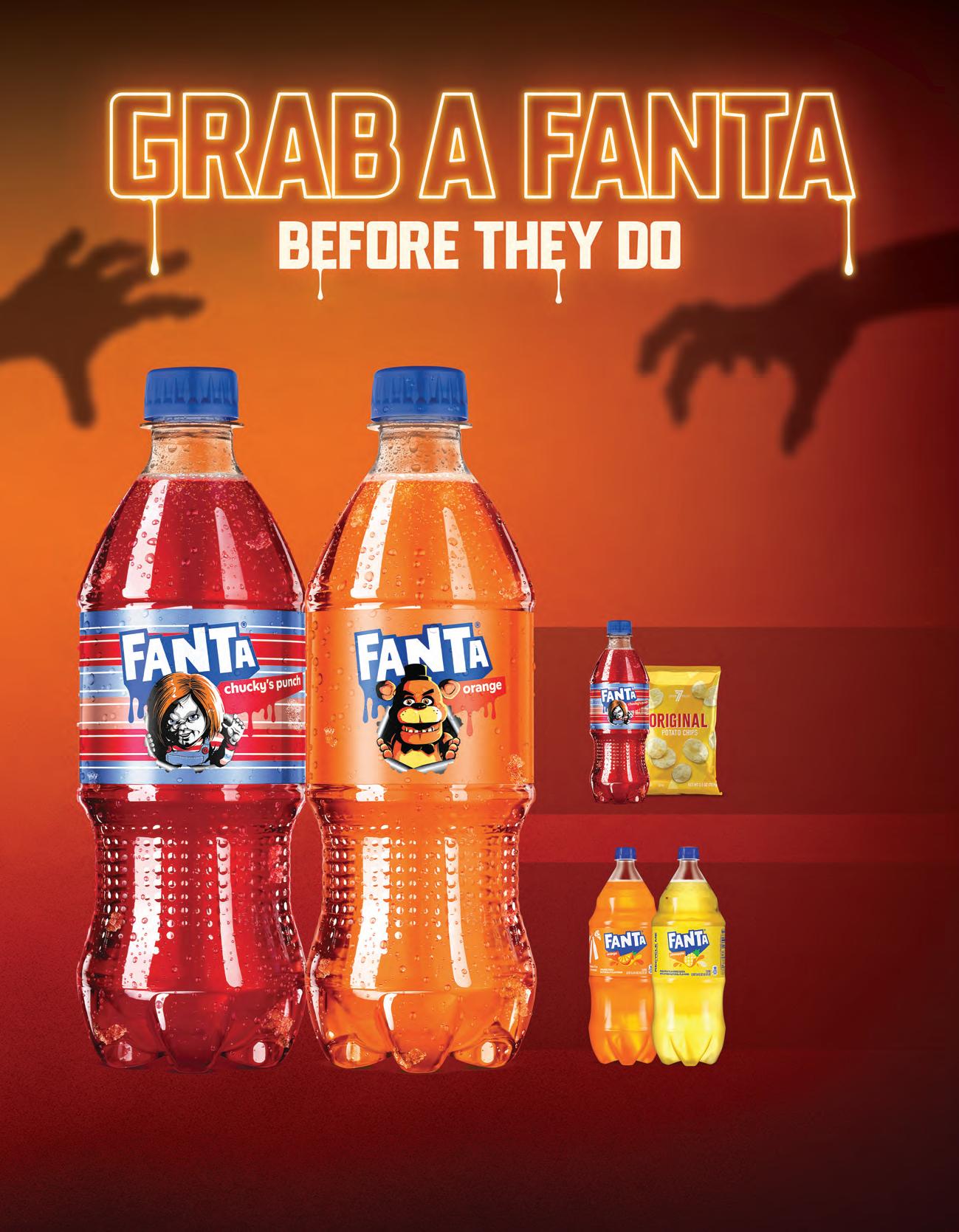





FIZZ FREE PINK LEMONADE

• Fizz Free Pink Lemonade Exclusive!
• First Case Free!
• Exclusive Timing 06/23 - 12/31/25
• P5: 8/27 - 10/28
• P5 Promo: 3/$6.00 (12oz Only)
• P5 FBO Custom POS/In-Store Signage
• P5 MLS Partnership & Consumer Sweepstakes 8/27-10/17
• 3 Day Flyaway trip for 2 to MLS Gold Cup in December!
• GULP Media – Programmatic Display Ads & GSTV
• Social Media & Influencer Support
• Brand Ambassador Challenge





CRUNCH IT’S TiME!
Satisfy your customer’s cravings with the NEW



STOCK UP NOW!

From October 29th, 2025 - January 6th, 2026, Cheez-It® Crunch, Cheez-It Duoz®, and Cheez-It® Snap’d® SKUs will be featured in an in-store 2/$5 promotion. They will also be featured on ramp FFE position on the front endcap.











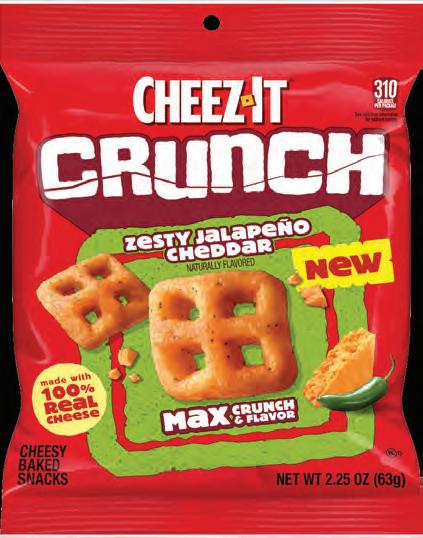




Cheez-It Duoz®
Cheez-It® Crunch Kick’n Nacho Cheese
Cheez-It®Snap’d® Cheddar Sour Cream & Onion SLIN 300031
Cheez-It® Crunch Zesty Jalapeño Cheddar


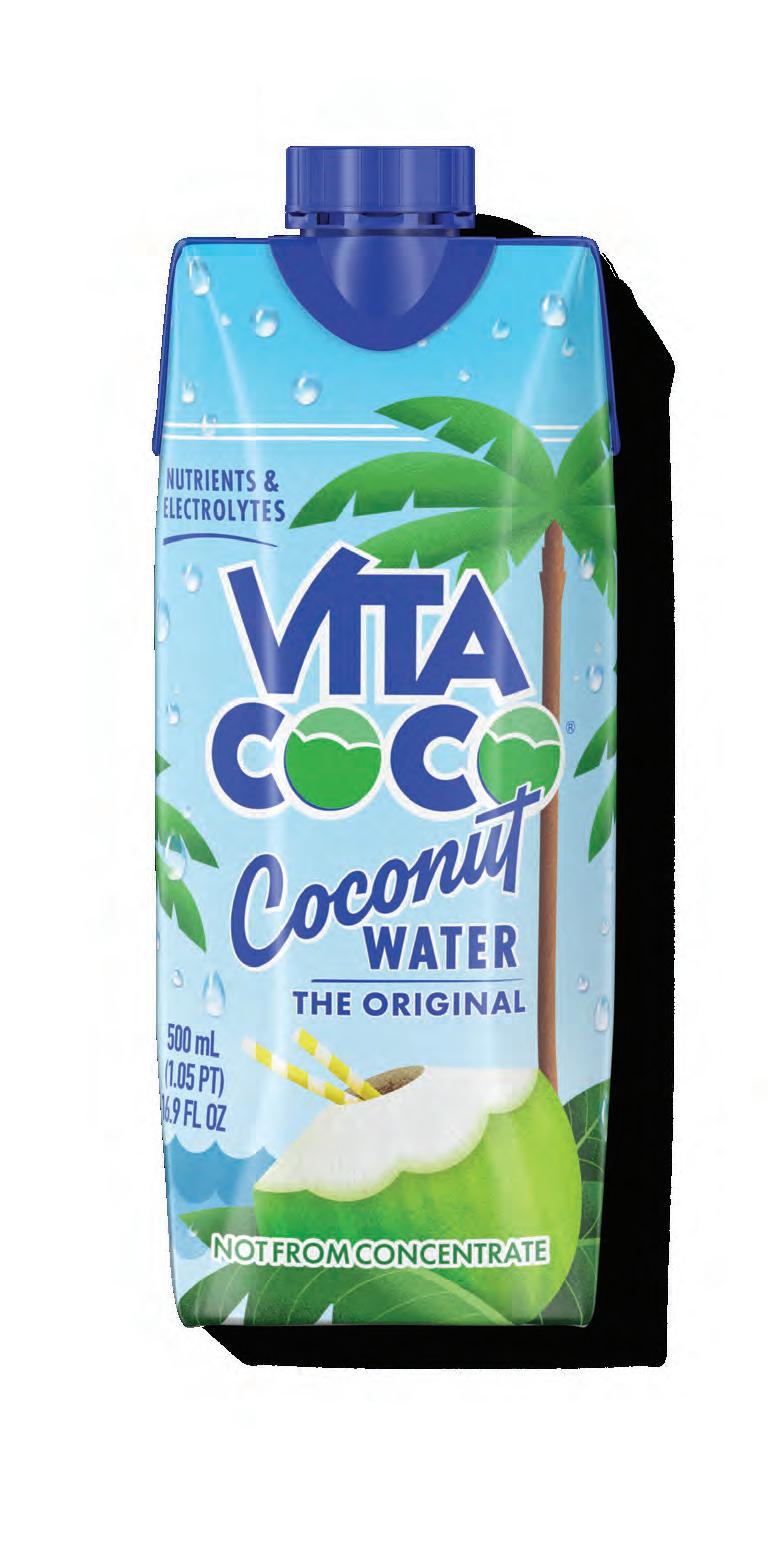




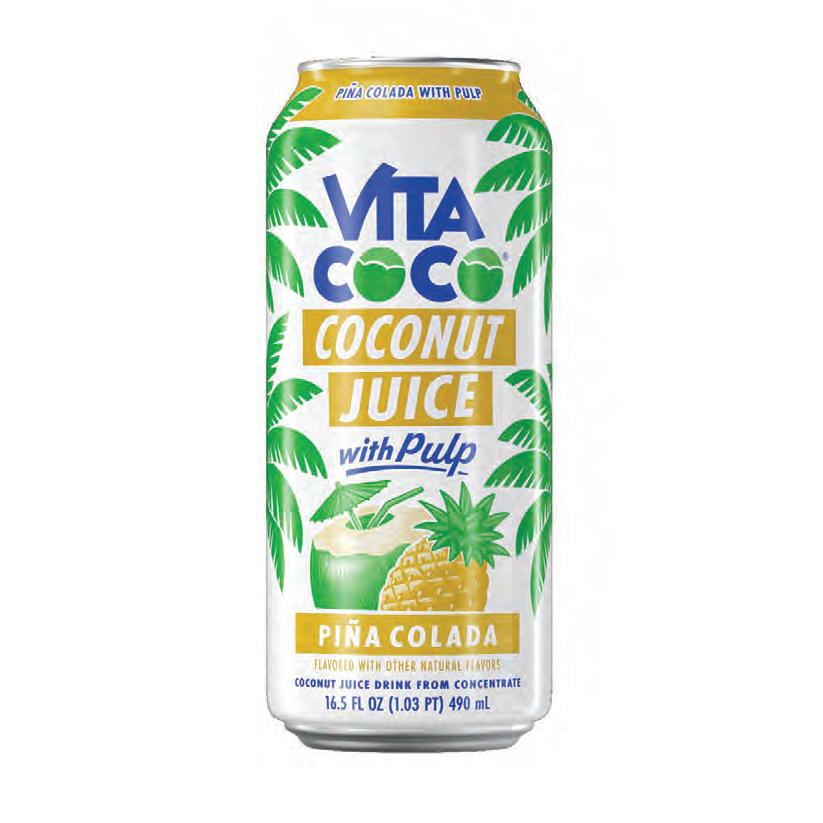




Sukhi Sandhu,
Eric H. Karp, General Counsel
Teeto Shirajee, NCASEF Vice Chair
Michelle Niccoli, NCASEF Vice Chair
Tom Ayres, Associate General Counsel—Warner,
Member News
7-Eleven’s Rising Stars
Convenience Store News recently announced its 2025 Future Leaders in Convenience (FLIC), honoring 42 rising stars under age 35 from 27 companies across the industry. Among the standout honorees, 7-Eleven Inc. celebrates five emerging leaders: Caitlin Crutchfield (Manager, Strategic Sourcing), Korynne Foote (TA Project Manager, Employment Branding & Recruitment Marketing), Lauren Tycom (Manager, Replenishment), Jessica Weese (Field Sales Merchandiser), and Elaine Williams (Manager, Talent Management). These individuals were selected based on peer and company nominations recognizing achievements between May 2024 and April 2025, and will be honored at the FLIC Summit in Austin this December.
C-Stores Win Over More QSR Customers
Consumer perceptions of convenience stores are shifting dramatically, with 72 percent now viewing them as legitimate competitors to quick-service restaurants, reported CSP Daily News. According to Intouch Insight, 85 percent of consumers have tried made-to-order food from c-stores.
Eating habits are also evolving: while cars remain the primary dining spot, in-store and destination-based consumption are rising. For example, in-store eating jumped from 5 percent in 2024 to 11 percent in 2025, and eating at one’s destination rose from 18 percent to 22 percent reflecting behaviors more typical of QSR patrons.
The menu mix is expanding as well, with notable year-overyear increases in purchases of sandwiches, wraps, breakfast items, hot meals, salads, and soups— suggesting growing consumer trust in c-store food quality. Promotions and discounts are becoming more influential, rising from 7 percent to 11 percent as a motivator for purchase, mirroring traditional QSR marketing tactics. Handheld items remain dominant, especially for breakfast, due to their portability and car-friendly packaging.
“Seventy-two percent of consumers view c-stores as legitimate competitors to quickservice restaurants.” NATIONAL COALITION OF ASSOCIATIONS OF 7-ELEVEN FRANCHISEES
Candy Remains Strong Despite Inflation
Despite inflationary pressures and rising ingredient costs—especially record-high cocoa prices—candy continued on page 12
The National Coalition Office
The strength of an independent trade association lies in its ability to promote, protect and advance the best interests of its members, something no single member or advisory group can achieve. The independent trade association can create a better understanding between its members and those with whom it deals. National Coalition offices are located in Ceres, California.
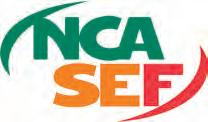
3645 Mitchell Road Suite B Ceres, CA 95307
855-444-7711 nationaloffice@ncasef.com
NATIONAL OFFICERS & STAFF
Sukhi Sandhu NATIONAL CHAIRMAN 855-444-7711 sukhi.sandhu@ncasef.com
Nick Bhullar EXECUTIVE VICE CHAIR 626-255-8555 bhullar711@yahoo.com
Teeto Shirajee VICE CHAIR 954-242-8595 teeto.shirajee@yahoo.com
Michelle Niccoli VICE CHAIR 719-661-1048 nicco711@yahoo.com
Khalid Asad VICE CHAIR 913-488-3014 Khalid.asad@aol.com
Rajneesh Singh TREASURER 214-208-6116 rjn_singh@yahoo.com
Shawn Howard OFFICE & VENDOR RELATIONS MANAGER 855-444-7711 shawnh@ncasef.com
Eric H. Karp, Esq. GENERAL COUNSEL 617-512-9004 ekarp@wfrllp.com
John Riggio MEETING/TRADE SHOW COORDINATOR 262-394-5518 johnr@jrplanners.com
John Santiago MANAGING EDITOR 267-994-4144 avantimag@ncasef.com
April J. Key GRAPHIC DESIGNER lirpayek@gmail.com
The Voice of 7-Eleven

Franchisees Join Modesto Police For Operation Chill
NCASEF Chairman Sukhi Sandhu and Central California franchisee Hady Nawabi recently joined the Modesto Police Department to present Slurpee coupons as part of 7-Eleven’s Operation Chill program, thanking officers for their daily service in keeping the community safe. Present at the gathering were Detective Sean Dodge, Chief Brandon Gillespie, Captain Chris Adams, Captain Robert Reyna, and Captain Bob Meredith of the Modesto Police Department. Also in attendance were SEI Area Leaders Stan Peery and Alfonso Franco, along with
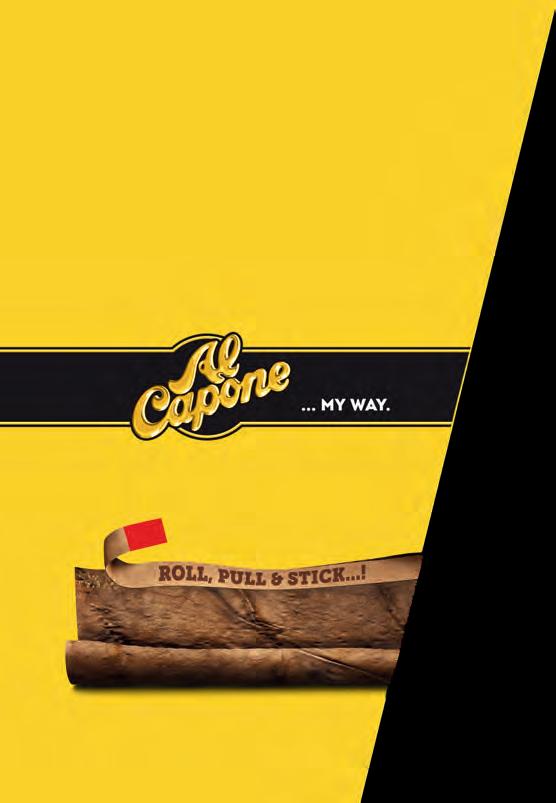
REAL PROFITS. REAL BENEFITS.
Western Zone Asset Protection Specialist David Marks and Zone Asset Protection Manager Steve Kellison. This year marked the 30th anniversary of Operation Chill, a signature outreach effort by SEI designed to build stronger connections between law enforcement and local youth. Since its launch, the program has distributed more than 24 million coupons nationwide, encouraging positive interactions between officers and kids by rewarding good deeds with a free Slurpee.








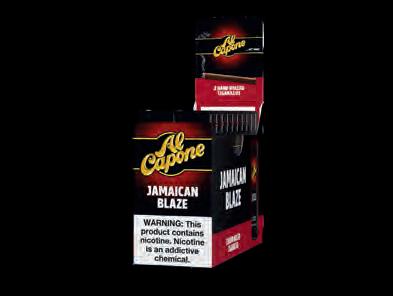

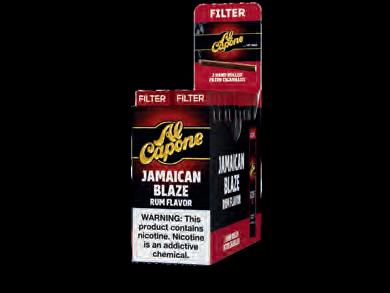
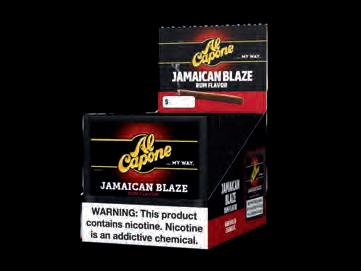
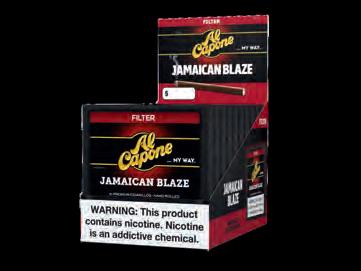
Member News
remains a resilient top-10 in-store category for convenience retailers, generating strong margins and basket-building opportunities, reported NACS Magazine. In 2024, monthly per-store candy sales rose 3.9 percent year-over-year to $9,136, with margins exceeding 51 percent, contributing 3.5 percent to overall in-store sales. While foot traffic into stores remains a challenge, particularly among lowerincome consumers, brands like Mars Wrigley and Hershey continue to innovate with premium offerings, seasonal promotions, and impulsedriven merchandising strategies. Non-chocolate candy, pegged formats, and gum have shown notable growth, with sour and freeze-dried varieties gaining


traction among Gen Z and millennial shoppers. Retailers are responding with value packs, cross-category bundles, and front-end design enhancements to drive impulse purchases and offset price sensitivity.
Store Brands Climb As Shoppers Seek Value
As inflationary pressures persist and supply chain uncertainties linger post-COVID, convenience retailers are increasingly turning to private-label products to boost margins and build customer loyalty, reported CStore Decisions. Chains like Loop Neighborhood are leading the charge by overseeing the full lifecycle of their offerings—from manufacturing to sale—allowing for greater control and profitability.
According to Circana and NielsenIQ reports, private-label sales are rising across mature categories like meat and bakery, as well as emerging ones like candy and snacks. Consumers are responding positively: 75 percent say privatelabel items offer good value, and 72 percent view them as viable alternatives to national brands. Notably, 54 percent of shoppers prioritize product fit over brand name, signaling a shift in purchasing behavior that favors store-owned labels.
Energy Drinks Drive Beverage Sales In C-Stores
Convenience store retailers are increasingly optimistic about
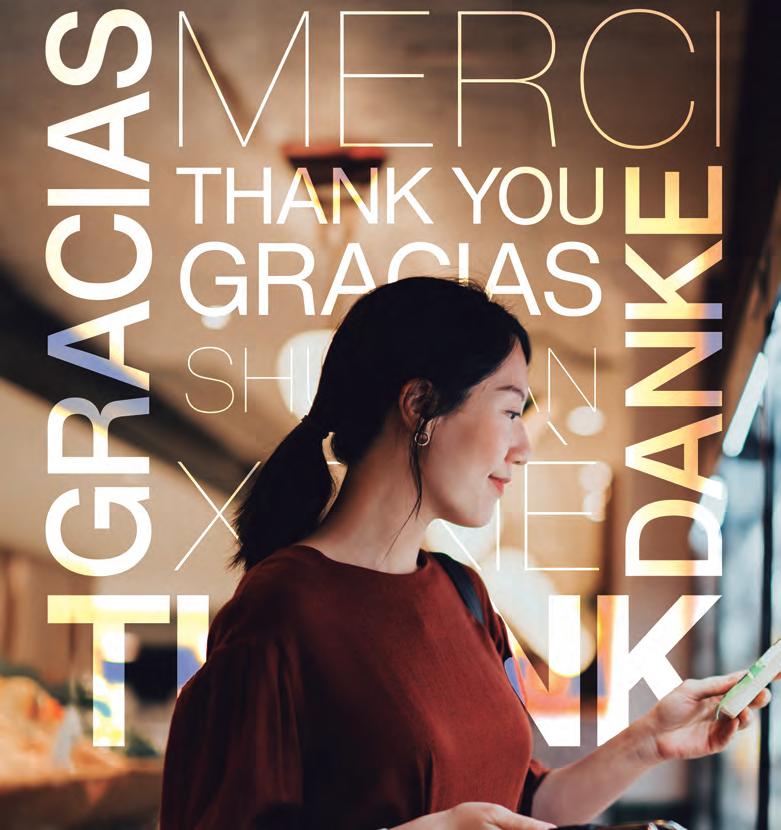

beverage category growth in 2025, with expectations rising to a 3.7 percent sales increase—up from 3.4 percent last quarter—according to a Goldman Sachs survey of operators representing roughly 37,000 U.S. stores. Energy drinks are leading the charge, projected to grow 12 percent this year after four consecutive quarters of gains. Brands like Red Bull, Ghost, and Alani Nu saw double-digit year-over-year growth in Q2, with Alani Nu jumping 45 percent. Monster Energy also posted an 8 percent increase, fueled by the successful launch of its Ultra Vice Guava flavor.
However, challenges remain. Retailers noted a slowdown in promotional activity from beverage manufacturers compared to the
previous quarter, and three-quarters expect price hikes later this year. The beverage category’s resilience is helping offset broader traffic pressures, with energy drinks emerging as a reliable growth engine amid economic uncertainty. Retailers are banking on continued innovation and strategic pricing to sustain momentum, positioning beverages—especially functional and performance-oriented options— as a cornerstone of convenience store profitability.
“Energy drink sales are projected to grow 12 percent this year after four consecutive quarters of gains.”
C-Stores Advance In Breakfast Wars
Fast-food chains are losing their grip on the breakfast market as convenience stores—especially “food-forward” ones like Wawa, Buc-ee’s, and Sheetz—see a surge in morning traffic, reported NBC News. While fast-food breakfast visits rose just 1 percent in the three months ending July 2025, convenience store visits jumped 9 percent, according to Circana. These stores have evolved beyond gas and snacks, offering made-to-order meals, broader beverage options, and perceived value that appeals to budget-conscious consumers. Chains like 7-Eleven are investing heavily in their prepared food offerings, inspired by successful continued on page 47
Reasons
we’re proud to serve you: It’s simple. It’s reliable. It’s Aon. Contact us for any insurance questions: (847) 629-4711 support.7eleven@aondigital.com www.aondigital.com/en-us/7eleven
Optimized our entire service team to continue serving you better. Introduced location-based policies for seamless service everywhere you go and grow.
Launched our digital wallet to continue serving you better with the latest technology. Stores wont be cancelled due to losses We have additional Loss prevention, Employee retention and compliance tools MARKED 20 YEARS AS YOUR OFFICIAL WORKERS’ COMP INSURANCE AND EPLI BROKER!

BY CHILDREN’S MIRACLE NETWORK HOSPITALS
NCASEF Champions Children’s Health During 49th Annual Convention
The National Coalition of Associations of 7-Eleven Franchisees (NCASEF) and its vendor partners rallied around Children’s Miracle Network Hospitals during the 49th Annual Convention and Trade Show, uniting golf, fundraising, and celebration to make a lasting impact. From the tournament at Monarch Beach Golf Links and a lively Charity Night Gala to honoring top fundraising franchisees and FOAs, the week showcased the power of partnership and generosity. With over $250,000 presented to CMN Hospitals, along with special recognitions and heartfelt stories, the event highlighted NCASEF’s commitment to changing kids’ health and shaping a brighter future for communities nationwide.
NCASEF Plays Yellow At Monarch Beach Golf Links
It was a beautiful day at Monarch Beach Golf Links on July 22 as vendor affiliates and franchisees joined together to make an impact for Children’s Miracle Network Hospitals (CMN Hospitals). Golfers, volunteers, and spectators donned yellow ribbons to show their support for Play Yellow, CMN Hospitals’ signature golf program.
Through on-course donations, golfers received mulligans, holein-one entries, and Play Yellow golf balls. Local patient Champion Hudson joined us to send golfers off and share his story around the course. Over $1,900 was raised on the course and will benefit Children’s Hospital of Orange County.
Play Yellow

because yellow is a color close to Jack and Barbara’s hearts, and has come to symbolize their long-time, passionate support of children’s health.
“Through generous individual and FOA gifts, member hospitals across the country will benefit from the 49th Annual Convention and Trade Show for years to come.”
Play Yellow is CMN Hospitals’ golf program that launched through a partnership with Jack and Barbara Nicklaus and the PGA TOUR. Play Yellow unites the golf industry to fundraise for CMN Hospitals. The program was dubbed Play Yellow
The Nicklaus’s passion for the cause of children’s health started in the late 1960s because of their friend Craig Smith, who was stricken with Ewing’s sarcoma as a teenager. As he battled the disease, Jack and Barbara supported Craig and his family in many ways. One way revolved around Jack wearing a yellow shirt, Craig’s favorite color, which Craig said brought Jack luck on the course. Over the years Jack could be seen wearing yellow on tournament Sundays. Craig’s legacy lives on through Jack and Barbara’s passion for helping children everywhere live the healthiest lives possible. When golfers play where the green meets yellow, we make a huge difference in the lives of millions of children and families!

Convention Opening & Annual Charity Night
The CMN Hospitals booth at the NCASEF trade show showcased how our collective efforts to provide member hospitals with the critical funds they need to advance pediatric healthcare at large, ultimately improving individual patients’ health, protecting our children’s futures, and enhancing our communities.
A digital caricature artist gave convention attendees badge caricatures to proudly wear around the convention floor. While waiting, convention attendees shared their reason for raising funds and awareness for Children’s Miracle Network Hospitals.
The annual Charity Night Gala was sponsored by CocaCola, Fairlife, Body Armor, and Monster Energy. The evening consisted of presentations, awards, and successful live and silent auctions. Together, we celebrated the impact of our partnership and raised an additional $48,000 for children’s hospitals across the country.
Through generous individual and FOA gifts, member hospitals across the country will benefit from the 49th Annual Convention and Trade Show for years to come. Thank you to every NCASEF member and affiliate vendor for your continued efforts and dedication to change kids’ health to change the future!
Congratulations to our 2024 fundraising award winners. We are grateful for the many ways you make a difference for local kids in your community!
2024 Top Fundraising Franchisees (Store Fundraising)
• Nick Bhullar
• John Poulos
2024 Top Fundraising FOAs (Event Fundraising & Store Fundraising)
• Southern California FOA
• Texas FOA
• Central Florida FOA
2024 Highest Fundraising Average FOAs (Combined Highest In-Store Fundraising Averages & FOA Giving Averages)
• Cal-Neva FOA
• Greater Oregon FOA
• Central Valley FOA
Hospital Impact Award: Chicagoland FOA (FOAC) & Midwest FOA
We’re proud to honor two extraordinary FOAs with the Hospital Impact Award for their outstanding dedication to Lurie Children’s Hospital. Through their unwavering commitment, in 2024 they raised nearly $70,000, organized impactful events and trade shows, and took the time to personally connect with the hospital’s mission. Their efforts have not only served the greater Chicago community but also earned them Lurie Children’s 2024 Change Maker Award. Please join us in celebrating the Chicagoland FOA and the Midwest FOA for their generosity, dedication, and heart. Together they’ve made a lasting difference for the hospital and the children it serves.

Miracle Champion Award: Naeem Khan
We had the privilege of honoring Naeem Khan with the Miracle Champion Award, recognizing his extraordinary dedication to Children’s Miracle Network Hospitals. Naeem’s commitment to changing kids’ health to change the future is truly inspiring. His efforts span from organizing worldclass golf tournaments to supporting CMN Hospitals at both local and national events, and fundraising through his store and FOA. His FOA consistently ranks among the highest fundraising averages, reflecting the strength of the partnership he’s built with his local hospital.
Thanks to Naeem’s generosity and unwavering support, hundreds of thousands of dollars have been raised to help make miracles happen for children and families across the network. We are proud to celebrate Naeem’s lasting impact and grateful for the difference he continues to make.
Annual Gala & Check Presentation
The convention week culminated with us wearing our fanciest outfits and a check for $250,000 being presented to Children’s Miracle Network Hospitals during the closing night’s Grand Banquet event. The funds from this check will go on to benefit the local member hospital of each donor or FOA, creating a nationwide positive impact.
These funds are unrestricted and go to each hospital’s most urgent needs, whether that’s providing care to children without insurance, investing in research that discovers life-saving treatments and cures, training the next generation of doctors and nurses, or offering families comfort and peace of mind during the most trying moments of their lives.
By improving medical equipment, facilities, and treatments, children’s hospitals are better equipped to address the most challenging health issues of our day.
“Thank you, NCASEF! We couldn’t
Thank you, NCASEF! We couldn’t achieve our mission without you. Together we can change kids’ health and the future—for all of us.






















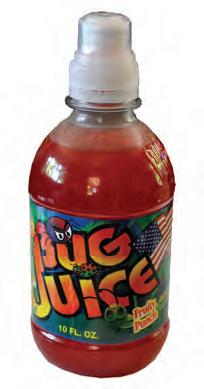











Speaking With One Voice
In business, there’s power in numbers. But numbers alone don’t create change—unity does. For 7-Eleven franchisees, our strength isn’t just in how many stores we operate or how many people we employ. It’s in how we come together to solve the challenges we all face.
“No matter which platform franchisees serve on—NCASEF, FOA, NBLC, or FLR—the issues must be communicated with a united voice.”
When we speak with one voice, we become far more effective at driving meaningful results than if we act alone. Over the years, I’ve seen what happens when franchisees, local FOA leaders, NCASEF Board members, and members of the National Business Leadership Council (NBLC) and Franchise Leadership Roundtable (FLR) speak individually: one person says one thing, another says something else, and SEI ends up hearing multiple versions of the same issue. The core message gets blurred, urgency is lost, and solutions slip further out of reach.
The truth is simple—SEI is far more receptive when we present a united front. When FOAs gather feedback from their members and bring those issues to NCASEF Board meetings, we can craft a single, clear message on behalf of all franchisees. That message, backed by
“It shows we are organized, focused, and determined to fix store-level problems in ways that benefit everyone—franchisees, SEI, and our customers.”
facts and delivered with purpose, is hard to ignore. It shows we are organized, focused, and determined to fix store-level problems in ways that benefit everyone—

BY SUKHI SANDHU NCASEF Chairman
franchisees, SEI, and our customers. No matter which platform franchisees serve on—NCASEF, FOA, NBLC, or FLR—the issues must be communicated with a united voice.
From time to time, the suggestion is made that litigation could be the solution to some of our issues. Litigation might grab headlines, but it rarely produces lasting solutions, and it damages trust and relationships between franchisees and SEI in the long term. It divides us, drains resources, and distracts from what truly matters—improving operations, increasing sales, and making our stores and the brand stronger. Lawsuits should remain a last resort, pursued only when all other avenues have been completely exhausted.
“Together, we can cut through the noise, align on priorities, and present SEI with clear, actionable solutions.”
That’s why unity and constructive dialogue are so important. Together, we can cut through the noise, align on priorities, and present SEI with clear, actionable solutions. One strong voice—representing the full weight of the franchisee community—can achieve what litigation often cannot: real, lasting change that makes our businesses more profitable and our partnerships more productive.

But unity doesn’t happen by chance—it requires planning and communication. Every FOA should regularly meet with its members to discuss store-level issues, gather input, and brainstorm solutions. Those conversations must continue at the national level, where NCASEF can consolidate priorities and present them to SEI. This is NCASEF’s role, and we will keep turning franchisee concerns into action that moves us all forward.

United Chicago FOAs Hold First Picnic Event
On July 19, the Chicagoland FOA, Midwest FOA, and Alliance of 7-Eleven Franchisees FOA came together to host their first United Chicago FOAs Picnic at Busse Woods Grove 27 in Elk Grove Village, Illinois. The event drew more than 400 attendees, creating a lively and festive atmosphere.
Families enjoyed a wide variety of activities, including

a Bubble Show, kite flying, face painting, musical chairs, and music from a DJ. Raffle prizes and games kept the excitement going, while food options such as snow cones, cotton candy, sugar cane juice, and pani puri added to the celebration. The picnic was a memorable opportunity for franchisees and their families to relax, connect, and enjoy time together.



“None of us is as great as all of us together”
The best way to stay informed of the latest changes and challenges to our 7-Eleven system-and the convenience industry, in general-is to join your local Franchise Owner’s Association. FOAs help franchisees share ideas and concerns, and allow us to approach our franchisor and vendor partners with a unified voice. Becoming an FOA member also makes you a member of the National Coalition, which consists of all 41 FOAs nationwide.
To join your local organization, contact the FOA president closest to you, or follow the instructions below to fill out an online membership form. If you cannot find the FOA closest to you, contact nationaloffice@ncasef. com for more information. We welcome your participation!

1. Log in to 7Help using 7Hub (secured) instore or using this link https:/7elevenna. service-now.com/from any external device.
2. In the search bar type “FOA.”
3. Select the popup suggestion “FOA/ PAC:FRANCHISE OWNERS ASSOCIATION.”
4. Type “NONE” in the “Current FOA” box if you are joining an FOA for the first time or you are not a member of any other FOA.
5. Type in the full name of the FOA that you wish to join (No abbreviation) in the “Future FOA” box.
6. Type in the amount of monthly dues as instructed per local FOA.
7. Type “Please enroll (store number) as a member of (name of the local) FOA.”
8. Repeat Step 7.
9. Press the green submit icon.
This isn’t about finger-pointing. It’s about being professional, solution-oriented partners. SEI needs to hear not just what’s wrong, but how we believe it can be fixed. When franchisees, FOAs, and NCASEF are aligned, we send a clear message: we are serious about solving problems, we’re willing to work collaboratively, and we expect SEI to do the same.
At the end of the day, we all want the same thing— thriving stores, satisfied customers, and a partnership that works for everyone—to make our 7-Eleven brand stronger. And the path to that future begins with speaking as one.
Thank You to Franchisees and Vendors
Before I close, I want to express my sincere appreciation to everyone
who joined us at the 49th Annual NCASEF Convention & Trade Show in Anaheim. It was inspiring to see so many familiar faces and to welcome new franchisees to our growing network. This year’s convention set new records with the highest attendance at our seminars, highest vendor participation in the trade show, and most orders placed on the trade show floor than at any previous convention. Your energy and engagement made the event a tremendous success.
A special thank you to our vendor partners for your unwavering support—from sponsoring events to showcasing top-selling products and offering fantastic deals to help our gross profits. Your commitment helps us grow our businesses and better serve our communities. We couldn’t do this without you.
Together—franchisees, FOAs, NCASEF, vendors, distributors, and SEI—we have the opportunity to the kind of unity that drives progress and ensures long-term success. If we continue to speak with one voice, I’m confident we’ll achieve it and strengthen our stores while taking the 7-Eleven brand to the next level.












Franchisee Profitability
Over the past few years there have been two extended but ultimately unsuccessful sagas involving the control of the parent company of 7-Eleven, Inc. (SEI). One was the 2023 initiative of the activist investor ValueAct, which among other things, advocated spinning off the convenience store business into a separate entity. The second was last year’s unsolicited $47B bid by Alimentation Couche-Tard (ACT), the parent company of Circle K, to purchase the company, which was abandoned this past July.
During the course of these episodes, hundreds of pages of PowerPoint presentations, press releases, letters and other communications were issued by both sides, but none of them ever focused on what I think should be a central goal of every franchisor, which is to support and pursue the profitability of its franchisees.
Then, on August 6, 2025 Stephen Hayes Dacus, newly installed CEO of the parent company, delivered a 26page PowerPoint presentation entitled Transformation of 7-Eleven, culminating what he characterized as an extensive bottom-up process to clarify key deliverables, milestones and accountability for this plan. The specific goals involve significant increases in revenue, gross profit and earnings per share, such that EBITDA grows by 45 percent or at the compound rate of 7 percent per year through 2030. The plan seeks to deliver shareholder returns far in excess of what has been experienced in the past, which is what triggered the ValueAct and ACT initiatives.
At the outset, Mr. Dacus identified the reasons for the intended transformation in the following terms:
“I think one of our challenges today is that we have lost some of our founder’s mentality. We are no longer as trusted by our customers as we once were, especially in Japan. We no longer aggressively embrace change the way our founders did. We have become a bit complacent, particularly at headquarters. Getting back to our founders’ mentality is critically important and this plan is an important step in that direction.”
“The presentation identifies the key challenges for SEI specifically as the consumer perception of the food and fuel demand.”

BY ERIC H. KARP General Counsel to NCASEF
The presentation identifies the key challenges for SEI specifically as the consumer perception of the food and fuel demand.
• Food—Management intends to change the perception of the value and the quality of the food products. This will involve tripling the share of proprietary and private brand products to 6.5 percent of merchandise sales in 2030. Mr. Dacus stated that margins on private brands in North America are 18.3 percent higher than national brands with equivalent or better quality.
• Fuel—The intent here is to build vertical integration capabilities to improve margin profile by capturing untapped profit pools within the supply chain, similar to what other competitors are doing at the present. Among other things this will involve supplying fuel to customers in other channels, with the intent to increase EBITDA from fuel by approximately $400M by 2030.
“But in my view, the most consequential challenge identified in the presentation, is that of franchisee profitability.”
But in my view, the most consequential challenge identified in the presentation, is that of franchisee profitability. We don’t know what caused the company to add this to its agenda, but it’s entirely possible that it relates, at least in part, to the fact that Mr. Dacus’ father was a franchisee in the United States and that he worked the midnight shift in that store as a teenager.
The focus on franchisee profitability is a hallmark of many other franchise systems. Cheryl Batchelder was the CEO of Popeyes starting in the mid-1990s. In an article in the 2016 Harvard Business Review entitled “The CEO of Popeyes on Treating Franchisees as the Most Important Customers,” she attributed her massive and stunning turnaround of the company to the following central themes:
• To try to turn Popeyes around, my team and I decided to focus intently on the franchisees rather than other stakeholders. We decided to measure our success by their success.
• The more my team and I talked about it, the more we



FOR



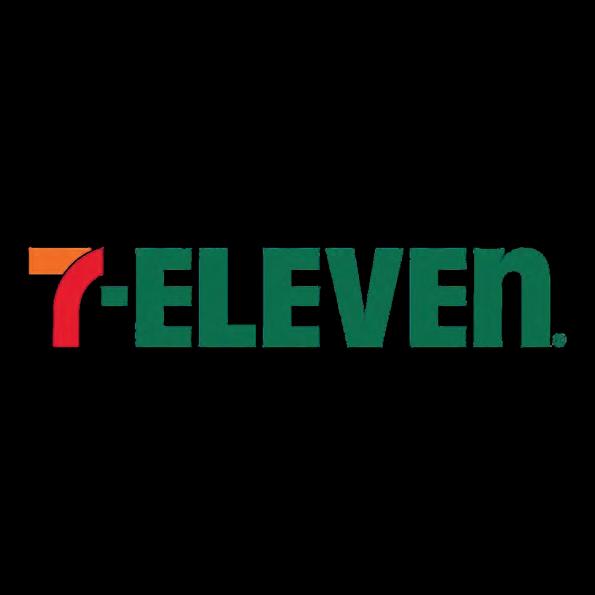

700ml
The slim 700mL bottle is convenient for on-the-go and fits in cupholders and backpacks!






saw the franchisees as our primary customers.
• The Popeyes turnaround has become a case study in what happens when leaders think about serving others— in this case, our franchisees.
The identified challenge of franchisee profitability in the 7-Eleven system was grouped together with issues relating to consumer spending, channel shift, and cost inflation. The presentation identified four approaches to growth in this area. Here is a summary, focusing on those portions relating to SEI:
1. Draw customers with more differentiation in food. Many of the small competitors in the United States are focusing more on food and doing it well. Our very successful and profitable restaurant in-store format generates higher sales and profit and incremental attachment sales of $0.81 for every dollar spent in the restaurant. Grow the number of stores with the restaurant format to 2,000 by 2030.
2. Satisfy changing customer needs with new formats and accelerate openings. Double the projected number of new openings, resulting in 1,300 new larger format stores in North America over the next five years.
3. Expand 7NOW graphic and service coverage. 7NOW satisfies the needs of franchisees for additional revenue streams and the needs of customers for more convenient shopping. The seemingly modest goal is to add 200 stores per year resulting in 8,500 stores in the program by 2030. Enhancements are being tested to enhance its attractiveness and differentiate SEI from its competitors.
4. Rigorous process to review all costs. Cost management is not currently a competitive advantage. SEI is more advanced in this process than SEJ, the benefits of which showed up in the most recent quarterly P&L (which showed Revenue down 6.3 percent but Operating Income was up 21.7 percent).
“The overall and primary goal of the Transformation of 7-Eleven is to generate enhanced capital to unlock and maximize shareholder value totaling nearly $60 billion by 2030.”


The overall and primary goal of the Transformation of 7-Eleven is to generate enhanced capital to unlock and

maximize shareholder value totaling nearly $60 billion by 2030. Nearly $19 billion would be returned to shareholders in the form of share repurchases and dividends. Another $9.5 billion would be used to pay down debt. The balance or about $21.6 billion would be devoted to capital expenditures, including mergers and acquisitions.
“I see this as a first step which will hopefully be followed by meaningful collaboration between representatives of the franchisor and the National Coalition.”
Observations and Questions:
It is very encouraging from management of the parent company of SEI to make clear to shareholders and others that franchisee profitability and the need for additional sources of revenue are on their radar. The challenges that franchisees face includes not only those mentioned, but also those relating to same store sales, transactions and gasoline pricing. I see this as a first step which will hopefully be followed by meaningful collaboration between representatives of the franchisor and the National Coalition. In the interim, here are some questions:
1. How much capital will be invested in converting existing locations to accommodating the in-store restaurant format, to what extent will franchisees have an opportunity to participate in these initiatives and on what basis?
2. Will the initiatives relating to the enhancement of food offerings be limited to the in-store restaurant format and the increase in private brands?
3. How much capital will be allocated to remodeling and renovating franchised stores?
4. Is SEI interested in increasing the percentage of locations in the United States that are franchised from its current levels of just over 60 percent to its historic levels of as much as 89 percent, and on what basis?
5. Is it time to revisit the many revisions to the franchise agreement rolled out in 2019, which transferred many expenses from the franchisor to the franchisees and changed the store level economics in material ways?
6. To what extent are the gross margin advantages of private and proprietary brands going to be memorialized in commitments by both parties?
7. If 7NOW is the future, what will be its specific and reliable impact on store level economics?








































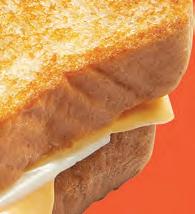






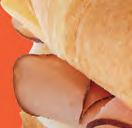




































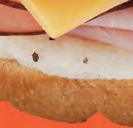

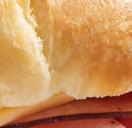


























































































































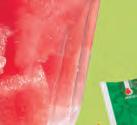






























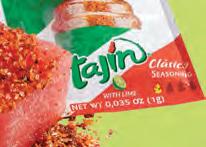
















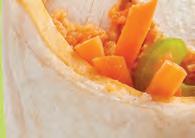



























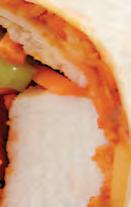























Fear-Driven Franchisee Vs Motivated Franchisee

BY TEETO SHIRAJEE NCASEF Vice Chair
When comparing a fear-driven franchisee to a motivated franchisee, the motivated franchisee typically brings more profit for the franchisor. Here’s why:
“Motivated franchisees tend to take initiative, looking for ways to grow their business and improve operations.”
Proactivity: Motivated franchisees tend to take initiative, looking for ways to grow their business and improve operations. They are more likely to implement marketing strategies, engage with customers, and explore expansion opportunities, which can lead to increased sales and profitability.
Customer Focus: Motivated franchisees often prioritize customer satisfaction and experience. A strong focus on delivering excellent service can lead to repeat customers and positive word-of-mouth marketing, which benefits the franchisor’s brand.




“They may experiment with new products, services, or operational improvements, which can result in higher revenues.”
Adaptability and Innovation: Motivated franchisees are generally more open to change and willing to adapt to market trends. They may experiment with new products, services, or operational improvements, which can result in higher revenues.
Long-Term Vision: Motivated franchisees are usually more invested in the long-term success of their business and the brand. This commitment can lead to sustained profitability, benefiting the franchisee and the franchisor.
“Frequent turnover can be costly for franchisors when training new franchisees and maintaining brand consistency.”
Lower Turnover: Fear-driven franchisees may operate under a mindset focused on compliance and avoiding mistakes, leading to a lack of innovation and potentially higher turnover rates. Frequent turnover can be costly for franchisors when training new franchisees and maintaining brand consistency.
In contrast, fear-driven franchisees may prioritize sticking to the status quo and avoiding risks, limiting their growth potential and leading to lower profitability. They might focus on simply meeting minimum standards rather than striving for excellence.
Motivated franchisees are generally more likely to drive profits for the franchisor due to their proactive approach, customer focus, adaptability, commitment, and potential for long-term success.
“When both parties work together effectively, it enhances brand success and profitability for everyone involved.”
When you boil it down, a motivated franchisee creates a successful franchise-franchisor relationship built on clear communication, support, shared goals, brand consistency, mutual investment, adaptability, and performance evaluation. When both parties work together effectively, it enhances brand success and profitability for everyone involved.

Change Kids’ Health Change the Future®.




A car accident changed Will’s life forever, leaving him unable to walk. But with the support of Dell Children’s Medical Center, he found a new path. Therapists helped him regain strength and embrace life in a wheelchair. Today, Will is a wheelchair basketball national champion, proving that nothing can hold him back. His story shows the amazing impact of Children’s Miracle Network Hospitals® , Your donations can help more kids like Will thrive.
Thanks to donations, Dell Children’s Medical Center provided Will with essential therapies, empowering him to overcome adversity and pursue his dreams.





















Turning Around A Struggling 7-Eleven
Practical strategies to boost inventory turns, improve profitability, and make staff your biggest asset.
If your store is currently losing money or just not hitting your profit goals, it is time to get serious about understanding what is going wrong and how to fix it. Often, the solution isn’t just about cutting costs—it’s about a comprehensive approach that involves analyzing your numbers, refining how you manage inventory, and most importantly, leveraging your staff. They can be your biggest asset or your biggest obstacle. Here is my take on how to approach that:
“Before making any changes, you need to understand where you stand.”
1. Start with a Full Financial and Performance Check
Before making any changes, you need to understand where you stand:
• Sales Data: Break down your sales carefully—look at which products are moving, which are stagnant, and during what times of day or week sales spike or dwindle. This helps you identify your bestsellers and those that are not worth keeping.
• Inventory Turnover: Calculate how quickly your inventory turns over using the 48P Product Sales Analysis Report and the IMR (Inventory Management Report). A low rate usually means you are holding onto stock too long, which ties up cash and increases spoilage or markdown costs. Aim for a healthy turnover that aligns with your product types.
• Expenses: Take a close look at your biggest costs— payroll, utilities, write-offs, supplies—and compare them to the subgroup and market benchmarks. Is anything out of line? Are there areas where you can tighten spending without sacrificing customer experience?
2. Sharpen Your Inventory Management
Proper inventory management is the backbone of profitability:
• Data-Driven Restocking: Use your POS system to see real-time sales trends. Adjust your stock levels accordingly—build up high-demand, high-margin items, and cut back on slow-moving or obsolete inventory.
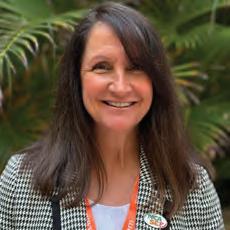
BY MICHELLE NICCOLI NCASEF Vice Chair
Think of it as working smarter, not harder.
• Minimize Waste: Train staff on FIFO (first-in, first-out) especially for perishable items and monitor expiration dates consistently. Implement routine stock counts to catch discrepancies early and prevent losses.
• Review Your Product Mix: Regularly evaluate what is selling and what is not. Consider seasonal or trending items that can bring in new customers. Remove dead stock swiftly and focus your space on products that turn over quickly and profitably.
“Promotions are a quick way to boost sales if executed correctly.”
3. Grow Revenue with Smarter Promotions
Promotions are a quick way to boost sales if executed correctly:
• Targeted Discounts: Use your sales data to run timely offers—discounting high-margin items or bundling complementary products to encourage larger transactions.
• Upselling & Cross-selling: Equip your team with menu prompts and scripts to suggest add-ons, upgrades, or related items. Even small suggestions can significantly increase total sales per customer.
• Store Atmosphere: Keep your store inviting—clean, organized, and well-lit. Small improvements in presentation can make a big difference in encouraging customers to linger and buy more.
4. Make Your Employees Your Secret Weapon
Your staff are personally responsible for a large chunk of your store’s success or failure:
• Understanding Their Impact: Disengaged employees tend to miss sales opportunities, mishandle stock, or contribute to theft, which erodes profit. Conversely, engaged staff who know their products and are motivated can drive sales and reduce losses.
• Harness Their Potential: Get your team involved—train them in customer service skills, inventory control, and loss prevention. Recognize their efforts openly; when
ALITTLEsour. ALITTLE sweet.









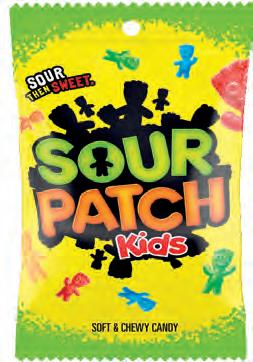



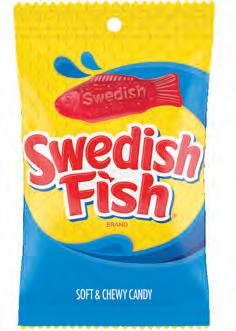


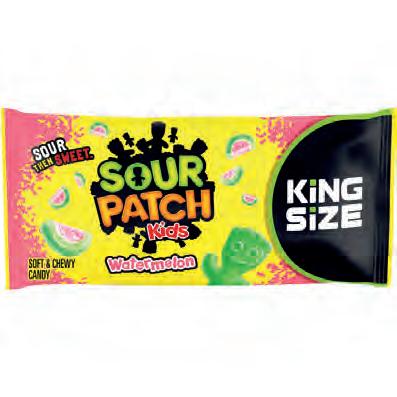

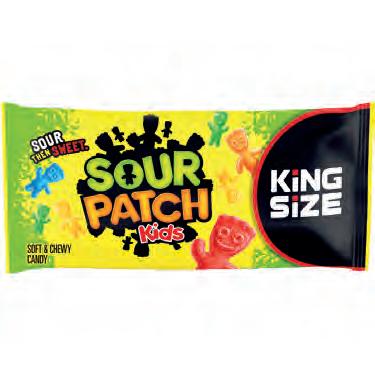
they see their contributions matter, they are more likely to step up.
5. Invest in Training & Motivation
Well-trained staff do not just sell more—they also help keep your costs down:

• Sales & Customer Service: Regular sessions on product details, upselling, and a friendly attitude encourage customers to spend more.
• Shrinkage Prevention: Teach staff how to spot suspicious activity, manage stock properly, and handle cash accurately. Building a culture of responsibility helps reduce theft and waste.
• Operational Skills: Show your team how to optimize checkout speed, restock efficiently, and minimize waste. Small tweaks in routines can save time and money.
• Recognition & Rewards: Celebrate staff who go above and beyond—this fosters a sense of ownership and accountability.
6. Cut Costs & Improve Operational Efficiency
Be proactive in managing your overhead:
• Smart Scheduling: Use your sales data to align staffing levels with busy periods. Overstaffing during slow times means unnecessary labor costs; understaffing during busy hours can hurt sales and customer experience.
• Control Expenses: Create monthly budgets and stick to them. Communicate the goals to your team. Monitor your progress using your payroll reports, Daily AP9, supply budget, and the 48A, just to name a few.
7. Boost Store Visibility & Customer Traffic
• Local Marketing: Use social media, flyers, or partnerships with nearby businesses to increase awareness. Sometimes simple, targeted outreach can significantly increase foot traffic.
• Store Presentation: Review your store daily. Keep displays fresh and strategically arranged. Highlight high-margin or promotional items at eye level and near entrances to boost impulse buys. Verify that POP is placed and visible.
• Equipment: Monitor cleaning and maintenance of all equipment inside your store. Create a sense of urgency to report issues. Follow-up to ensure timely repair.
• Cleanliness and Layout: Make sure your store is spotless and easy to navigate. An inviting environment encourages customers to stay longer and buy more.
8. Reassess Your Strategy & Store Layout
• Regular Evaluation: Keep track of what marketing tactics and promotions are actually bringing in customers—or not. Be ready to pivot as needed.
• Store Layout Optimization: Place your most profitable and popular products in high-traffic areas. Use signage to draw attention to key items.
• Streamline the Shopping Experience: Simplify the layout to reduce confusion, make checkout faster, and guide customers towards high-margin products.
Why Your Employees Are the Key to Profitability
Your staff can be your best asset or your biggest obstacle:
• Preventing Shrinkage: Employees who are engaged and trained help minimize theft, waste, and inventory errors.
• Driving Sales: Encouraging upselling, friendly service, and initiative-taking engagement increases transaction sizes and overall revenue.
• Managing Inventory: Proper handling, rotation, and regular cycle counts help reduce waste and avoid stockouts.
• Operational Excellence: Well-scheduled and motivated staff work more efficiently, reducing labor costs and improving margins.
Create a culture that values responsibility and recognition. Regular training, clear expectations, and rewards can motivate your team to take ownership of their roles—and ultimately contribute directly to your store’s turnaround.
“The key is to understand your financials inside and out, optimize your inventory, cut unnecessary costs, and, most importantly, empower your staff.”
Final Thoughts
Revitalizing a store that is not performing well takes a comprehensive, disciplined approach. The key is to understand your financials inside and out, optimize your inventory, cut unnecessary costs, and, most importantly, empower your staff. They are your frontline, and their attitude and skills can make or break your store’s success. By focusing on these strategies and fostering a team culture of accountability, continuous improvement, and motivation, you set your store up for a healthier, more profitable future. The work might be challenging, but with focus and the right mindset, turning things around is absolutely within reach.
San Diego FOA Stores Celebrate 7-Eleven Day
San Diego franchisees joined the nationwide celebration of 7-Eleven Day on July 11 by offering free small Slurpees to their communities. Local stores participating included #13662, #33970, and #13628, which welcomed customers eager to take part in the brand’s annual tradition marking its 98th anniversary. Along with giveaways, customers who scanned

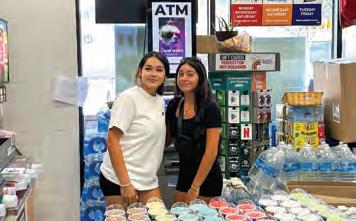


their rewards information received a bonus coupon for another free Slurpee, redeemable through July 31, and enjoyed $1 snack and beverage deals throughout the month. The event created a joyful atmosphere across San Diego, as franchisees and customers came together to honor nearly a century of the Slurpee tradition.

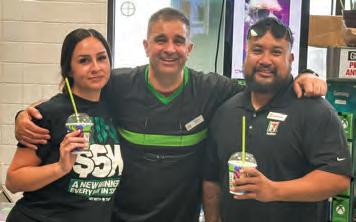







How Franchisor Going Public May Affect You
After the Canadian owner of Circle K, Alimentation Couche-Tard, Inc., abandoned its $47 billion purchase bid, on July 17, 2025, the Japanese corporate parent Seven & i Holdings Co., Ltd. (7&i) issued a press release that, among other things, reiterated its plans to make an initial public offering (IPO) of its “North American convenience store business.” An IPO is also known as “going public,” and occurs when a private company first offers its shares
“In March 2025, Seven & i first announced that it planned to make the IPO in the second half of 2026, assuming favorable market conditions.”

of stock for sale to the general investing public. In March 2025, Seven & i first announced that it planned to make the IPO in the second half of 2026, assuming favorable market conditions. Industry analysts expect Seven & i to be the majority shareholder of the new 7 Eleven, Inc. (SEI), but there are many details yet to be determined and disclosed. Here are some thoughts about how an IPO, if it occurs, may affect your franchises.
First, an IPO would generate significant additional capital for SEI, which could be used to:
• expand the number of stores;
• rehabilitate existing stores;
• improve food service capabilities;
• enhance marketing strategies; and/or
• upgrade digital infrastructure, among many other brand-building activities.
Second, SEI would have to make more financial data publicly available and do so more frequently. Currently, the U.S. Federal Trade Commission (FTC) requires franchisors to issue franchise disclosure documents (FDDs) at least once a year so that prospective and renewing franchisees have sufficient information to make investment decisions. Under the FTC’s Franchise Rule, franchisors may—but are not required to—make financial performance representations in Item 19 of the FDD.

BY TOM AYRE ASSOCIATE GENERAL COUNSEL— WARNER, FEDERICO & RYAN, LLP
SEI typically has not provided data regarding revenues, expenses, or profitability of franchised stores. Seven & i is a Japanese public company and provides required financial data, but its North American operations are only a fraction of its total worldwide operations. The U.S. Securities and Exchange Commission (SEC) regulates public corporations and requires them to issue quarterly and annual audited financial reports. If SEI goes public, those reports may very well contain additional data that help North American franchisees better understand the financial health of franchised stores here and the system in general.
Third, SEI would join many well-known restaurant brands that rely on the franchise model like McDonald’s (MCD), Domino’s (DPZ), and Yum! Brands (YUM), which owns a portfolio of franchised brands like KFC, Pizza Hut, and Taco Bell. Other publicly traded brands that
“If SEI goes public, those reports may very well contain additional data that help North American franchisees better understand the financial
of
franchised
health
stores here and the system in general.”
you may know include Planet Fitness (PLNT), Marriott International (MAR), and Driven Brands (DRVN), which is the parent company of automotive service brands Maaco and Meineke. The Franchise Group (FRG) is a conglomerate that owns many different and diverse franchised brands like The Vitamin Shoppe, Pet Supplies Plus, American Freight, and Sylvan Learning. In case you were wondering, yes, franchisees can buy shares in their franchisor’s public corporation if they wish.
We will continue to monitor corporate developments and update you when more information becomes available.
If you have any questions about this topic or anything else relating to your franchise agreement, you can reach me at tayres@wfrllp.com and 617-970-0063.
Perfect For Game Day
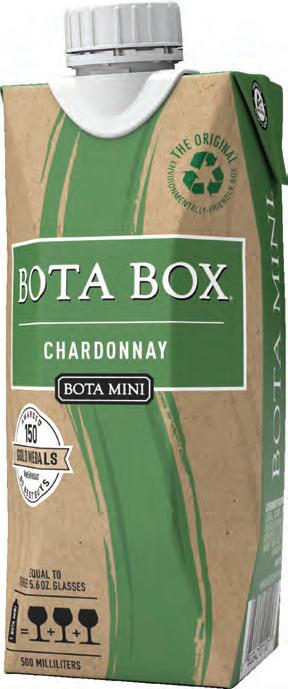





Chardonnay
Pinot Grigio


BY JOHN WALES Program Manager
Creating A Culture Of Safety
What does it mean to have a “culture of safety?”
To me, it’s the consistent, conscious awareness of potential hazards within your sphere of influence and taking proactive steps to address them before they become problems. The best way to explain this is through two real convenience store visits I’ve made recently.
Example 1: A Missed Opportunity
Recently, I stopped at a store around 11:00 p.m. The parking lot was dimly lit. Trash bins were overflowing. A large handwritten sign on the door announced, “No public restrooms.”
Inside, the lone employee was on their cell phone and never acknowledged me. A dirty mop leaned against the soda fountain, and a musty odor hung in the air. I bought my 20-ounce diet soda and left without a word exchanged. Hazards I noticed immediately:
• Poor lighting and cluttered conditions limited visibility and awareness of who was outside or entering.
• The handwritten sign on the door blocked the security camera’s view of customers’ faces.
• Cleaning equipment was left in a high-traffic area with no caution signage, which is a hazard to both customers and staff.
• Lack of employee engagement created an environment where theft or other issues could go unnoticed. In short, the store didn’t just look uninviting—it felt unsafe.
“To me, it’s the consistent, conscious awareness of potential hazards within your sphere of influence and taking proactive steps to address them before they become problems.”
Example 2: A Culture of Safety in Action
Several weeks later, after a delayed flight, I visited a different store at about 2:00 a.m. This store was the
opposite: brightly lit, clean, and welcoming.
As I entered, the clerk looked up and greeted me with a simple, “Welcome.” I grabbed my diet soda, and the team member pointed out a promotion: two for a better price. I bought two. Then, he mentioned fresh food just put on the roller grill, so I added a hot dog. During checkout, he also mentioned lottery tickets.
“I walked out spending $24 instead of the $3 I planned, and I was happy to do it.”
I walked out spending $24 instead of the $3 I planned, and I was happy to do it. Why?
• I felt safe the entire time.
• The store was clean and well-lit, with clear sightlines down every aisle.
• The employee was attentive, engaged, and took pride in his role.
• The atmosphere invited me to spend more.
“The second store didn’t just sell products— it created an environment where safety and pride were part of the customer experience.”
The Takeaway
The second store didn’t just sell products—it created an environment where safety and pride were part of the customer experience.
When we get caught up in metrics and day-to-day pressures, it’s easy to forget to see your stores from your customers’ perspective. But consistently creating an environment where employees feel safe and proud will make customers feel more comfortable and more likely to spend their hard-earned money at your location.
A true culture of safety starts with you.
If you have safety tips to share or would like to hear about some of the successful strategies I’ve seen, contact me at a trade show or give me a call.
Our greatest successes happen when we work together.

STOCK THE SPRING WATER DIFFERENCE
Maximize velocities and profits with these popular SKUs.
THE CORE 4

20 oz

700mL

• Easy to grab and pack
• Fits nicely in cupholders and purses
• Perfect for a quick pick-me-up
1 Liter

• A multitasking marvel
• Easy to drink and less likely to spill
• Ideal for a run, hike or working outside

1.5 Liter

• Big hydration on hot days
• Select size for long road trips
• Helps shoppers reach hydration goals
• Perfect for sharing
• Helps avoid stops on the road
• More hydration in a single purchase
WHY OUR WATERS WIN
• Regional favorites for generations.
• Locally sourced from carefully selected springs.
• Naturally occurring electrolytes for a crisp taste.








BY THE WATER STREET COLLECTIVE
Ryde: Wellbeing Brings Functional Shots To 7-Eleven Stores Nationwide
Ryde: Wellbeing is introducing its scientifically backed line of functional 2-ounce shots to 7-Eleven franchisees across the United States, following a successful launch in Texas earlier this year. This expansion represents a significant opportunity for franchisees to carry an innovative, high-margin product in a fast-growing category.
Developed by The Water Street Collective, Ryde: offers three functional shot varieties, with 7-Eleven featuring two varieties: (1) Energize for a morning or pre-meeting boost* and (2) Focus to help go from distracted to focused and power through the midday slump.* Each is made with Ryde: Ryplenish™, a proprietary blend, along with scientifically backed ingredients selected to support energy and alertness in convenient, portable packaging.*
Ryde: entered the Texas market with 7-Eleven in late 2024 and quickly built repeat sales thanks to a combination of premium product quality, strategic marketing, and targeted sampling efforts. The expansion to new markets gives participating franchisees the opportunity to be the only retail outlet in their area carrying the brand at this time, providing a strong point of differentiation in the functional beverage set. This exclusivity can help build customer loyalty, drive incremental store traffic, and position 7-Eleven as a destination for functional wellness products. The packaging is designed for maximum visual impact in the cold vault. Sleek, resealable aluminum bottles offer not only standout shelf presence but also support sustainability initiatives by being recyclable. The modern design and bold colors make the product instantly recognizable and appealing to consumers seeking functional beverages that align with their active, on-the-
“Franchisees carrying Ryde: can potentially earn over 50 percent gross profit margins per unit, making it one of the more profitable beverage additions in the category.”
go lifestyles.
Franchisees carrying Ryde: can potentially earn over 50 percent gross profit margins per unit, making it one of the more profitable beverage additions in the category. In addition, all participating locations will be integrated into Ryde:’s 2026 Promotional Calendar, which includes:
• In-store merchandising and display support;
• Digital advertising across social media and programmatic channels;
• Targeted sampling programs to drive trial and repeat purchase; and
• Seasonal promotional tie-ins to capture peak demand periods.
Ryde:’s marketing approach blends grassroots activations with broad digital reach. In Texas, the brand executed on-the-ground sampling events, influencer partnerships, and social media content focused on relatable, real-life scenarios from early morning commutes to late-night deadlines, showing exactly when each shot fits into a consumer’s day. This relatable storytelling has been key to fostering authentic brand connections and encouraging repeat purchases.
Partnerships remain an important part of Ryde:’s growth strategy. The brand has collaborated with event organizers, local businesses, and community groups to reach its target audience: young professionals, busy parents, and individuals seeking convenient, effective solutions to keep up with their demanding schedules. By pairing these partnerships with digital and in-store activations, Ryde: builds brand awareness at multiple touchpoints, reinforcing its value proposition.
For 7-Eleven franchisees, Ryde: offers more than just another SKU. It’s a high-margin, ready-to-drink product with demonstrated consumer appeal, designed to keep customers coming back. As the brand says… “Whatever life throws at you, Ryde: it!”
(*These statements have not been evaluated by the Food and Drug Administration. This product is not intended to diagnose, treat, cure, or prevent any disease.)
Franchisee Continues Back-To-School Tradition
California franchisee Ravi Chahal and his wife Harpreet once again brought joy to local families with their annual back-to-school celebrations, held across multiple school district start dates in August. For the eighth year in a row, students were treated to free Slurpees at two of their stores—in Arroyo Grande and Orcutt—along with slices of hot, fresh pizza that earned rave reviews. The event drew large, happy crowds and was made even more special by the presence of the Sheriff’s Department, Police, and Fire Department, who came out with vehicles to greet kids and families. Vendors PepsiCo and Congo Brands also supported the festivities by providing giveaways.







The Chahals make the event a true family affair, involving their children in the fun. Customers and community members look forward to this tradition every year, which has become a meaningful way to kick off the school season. Area leaders David Continente and Cung Pham, Market Leader Griselda Torrero, and Coastal Desert Regional Director Kia Hasheminejad also lent their support. With free treats, strong vendor partnerships, and law enforcement joining in, Ravi and Harpreet once again created a welcoming environment that families won’t soon forget.




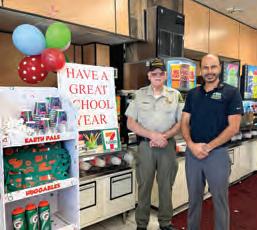


A Week Of Unity, Innovation, & Celebration In Anaheim NCASEF’s 49 th Annual Convention & Trade Show
The National Coalition of Associations of 7-Eleven Franchisees (NCASEF) held its 49th Annual Convention and Trade Show from July 21–24, 2025, and the energy throughout the week showed why this event has become such a cornerstone for franchisees across the country.
Held at the Anaheim Convention Center, the event carried the theme “Soaring to New Heights Together,” reminding everyone that the 7-Eleven system is strongest when franchisees, vendors, distributors, and SEI work side by side toward common goals.
NCASEF Chairman Sukhi Sandhu welcomed attendees with a message in the special Avanti convention issue about the power of unity and collaboration. He noted that the convention wasn’t just about deals and products—it was about relationships. “Every conversation, every handshake, and every connection made this week helps reinforce the foundation we’ve built,” he wrote. His words set the tone for a week of learning, networking, and celebration.
The event kicked off with a lively welcome reception on the Grand Plaza of the Anaheim Convention Center featuring food trucks and DJ entertainment. The next day offered franchisees a choice of relaxation or charity: some enjoyed a ferry ride to Catalina Island, while others teed off at Monarch Beach Golf Links for the annual Charity Golf Tournament, which raised funds for Children’s
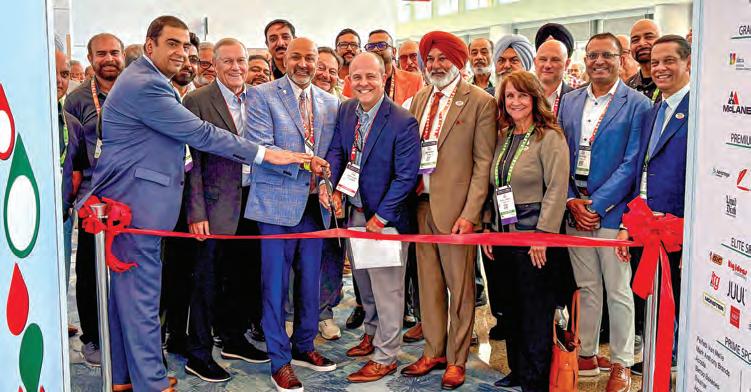











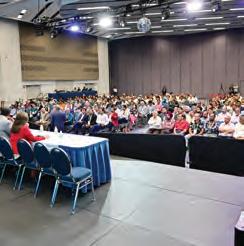

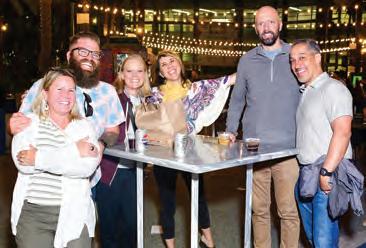











Miracle Network Hospitals. It was a perfect balance of fun, networking, and giving back.




The heart of the convention came on July 23 and 24 with two days of educational seminars and the highly anticipated trade show. The seminars gave franchisees the chance to hear directly from NCASEF officers as well as SEI leaders, who discussed key topics like operations, merchandising, and government affairs. These sessions were designed to provide real take-home value—information that franchisees could use immediately to strengthen their stores.
Meanwhile, the trade show floor was buzzing with excitement. Exhibitors filled the hall, offering exclusive deals, showcasing new products, and sharing innovative solutions to help franchisees boost sales and efficiency. From energy drinks and fresh foods to cleaning supplies and new snacks, the variety was immense. Vendors sweetened the experience with raffle entries for every order placed, leading up to big prize giveaways that added even more excitement.
SEI also had a strong presence with multiple booths dedicated to areas such as accounting, IT, and asset protection. Company representatives were on hand
continued on page 43










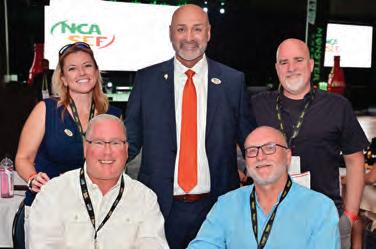




















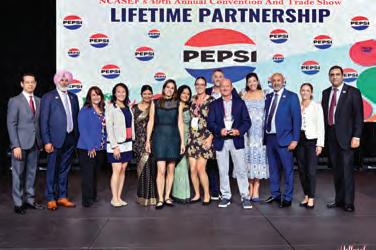
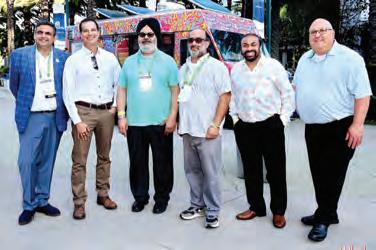


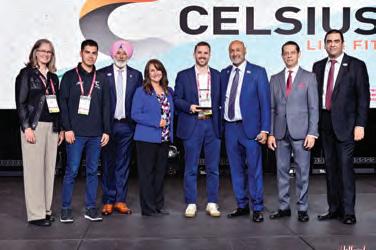




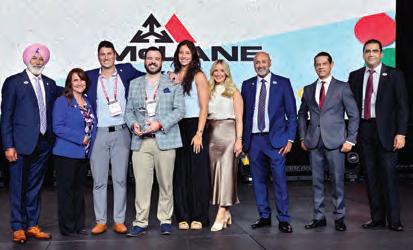
to answer questions, provide updates, and engage directly with franchisees— which franchisees welcomed as a positive sign of SEI’s willingness to engage and work together toward shared goals.
The evenings brought opportunities to celebrate together. The Charity Night Gala blended fine dining, auctions, and live entertainment while raising additional funds for CMN Hospitals. The Grand Banquet on July 24 closed the week with franchisee and vendor recognition awards, a check presentation to CMN Hospitals, and music and dancing to keep the celebration going late into the night.
The 49th Annual Convention and Trade Show proved to be a resounding success. Franchisees discovered new products, gained valuable knowledge, and reconnected with colleagues and vendors. The week revealed an important truth: when franchisees, vendors, distributors, and SEI work together, there are no limits to how high the system can soar.
Mark Your Calendars: Next year NCASEF will celebrate its Golden Jubilee 50th Annual Convention and Trade Show in New York City, July 2124! It promises to be the best one yet!


































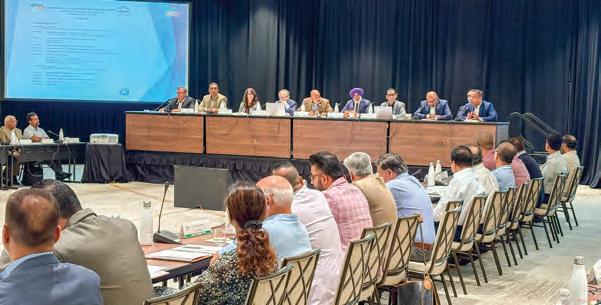
The National Coalition of Associations of 7-Eleven Franchisees (NCASEF) held its third quarter Board of Directors meeting on July 21, 2025, in Anaheim, California, just before the opening of its 49th Annual Convention and Trade Show. The meeting brought together Board members, franchisees, and SEI representatives for a day of discussions that ranged from store-level issues to SEI’s long-term business strategies.
The meeting covered membership requests from FOAs, including the Empire State FOA, though decisions were tabled until the fourth quarter session to allow for more thorough review. Membership and Bylaws Committee Chair Joe Rossi also noted that another FOA application would be considered at the next Board meeting once all paperwork was in order. Treasurer Raj Singh presented the Treasury Report, which was approved unanimously after review. Committee updates followed, with the Convention & Entertainment Committee addressing final preparations, answering questions, and encouraging Board members to motivate their FOA members to actively participate in upcoming sessions.
NCASEF Board Meets In Anaheim Ahead Of Convention

A highlight of the meeting was a presentation from SEI’s leadership team, led by Senior Vice President of Operations for Franchise Stores Tom Lesser, who reviewed the economic landscape, consumer spending patterns, and SEI’s strategic plans through 2030. Topics included investments in fresh foods, proprietary beverages, digital enhancements, and store development. His presentation also covered brand standards, store cleanliness, foodservice initiatives, and the company’s
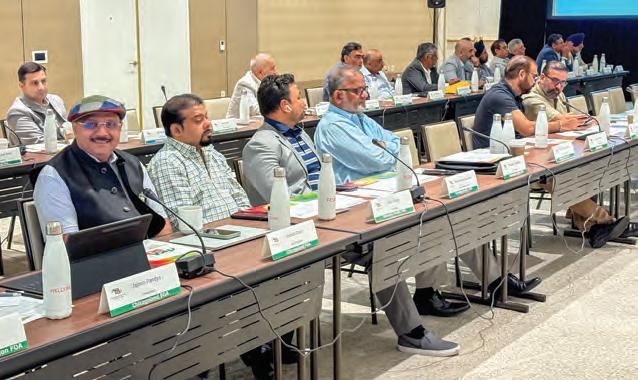

continued


RI strategy. Lesser stressed the importance of maintaining consistency across stores, while also highlighting new tools and programs, such as the food planner tool and hot breakfast sandwich program, aimed at driving growth. A Q&A session allowed franchisees to raise issues ranging from increasing labor expenses to maintenance challenges and unexpected equipment installations, which Lesser addressed directly.
General Counsel Eric Karp provided an update on Couche-Tard’s withdrawn bid to acquire Seven & i and discussed its possible implications for the system. He also reviewed SEI’s financials based on public records, prompting questions and discussion from Board members. Additional business included conversations on NCASEF membership requirements, voting privacy, and officer election rules, with clarification offered on which changes could be made through policy and which required bylaw amendments.



The meeting closed with final updates from the Convention and Charity Golf committees, both of which stated the importance of franchisee and vendor participation in making the events successful. Chairman Sukhi Sandhu wrapped up the session by encouraging FOA members to actively engage during the SEI seminar, and thanking the Board and committees for their commitment and hard work leading into the convention.
continued from page 45

German discount grocer Aldi is accelerating its U.S. expansion, planning to add over 200 stores in 2025 and more than 800 by 2028, making it the fastest-growing retailer in the country after the major dollar chains, reported The Wall Street Journal. With 90 percent of its inventory consisting of private-label goods and a cost-cutting model that includes direct-to-shelf crate stocking, Aldi is targeting inflation-weary shoppers and urban markets. • Kroger is reintroducing paper coupons across all stores and slashing prices on over 3,500 items to appeal to shoppers who are less digitally inclined and more price-sensitive, reported Grocery Dive. This back-to-basics approach—coupled with a strong push for private label products and simplified supplier promotions—is improving customer price perception and driving gains in same-store sales. • Casey’s reported a strong first quarter for fiscal 2025, with net income rising 19.5 percent year-over-year to $215.4 million and EBITDA reaching $414.3 million, driven by robust same-store sales and the addition of over 200 new store locations. Inside same-store sales grew 4.3 percent, fueled by successful summer merchandising and reduced labor hours, while fuel gross profit surged 18.8 percent to $373.6 million. • DoorDash’s Iced Coffee Index reveals that iced coffee has evolved into a year-round emotional comfort ritual, with 87 percent of surveyed consumers drinking it even when they don’t need caffeine and 79 percent viewing it as a “little treat” during stressful times. • Wawa recently opened its first travel center in Hope Mills, North Carolina to serve long-haul truckers with amenities such as highspeed diesel lanes, a CAT weigh station, free tractor-trailer parking, and a pet relief area, reported Trucker News. The company said it plans to open two more travels centers—one in Ohio and one in Indiana. • More than half of New Mexico’s 1,687 SNAP-authorized retailers—
models abroad, while others like RaceTrac are acquiring restaurant brands to expand their footprint. The shift reflects a growing consumer preference for variety, convenience, and quality—traits that c-stores are increasingly delivering better than their fast-food counterparts. Meanwhile, fast-food giants like McDonald’s are struggling to maintain breakfast traffic amid rising prices and changing consumer habits. Morning visits to McDonald’s dropped from 33.5 percent of total traffic in early 2019 to 29.9 percent in 2025, and the company now acknowledges breakfast as its weakest daypart. To counter the decline, chains are bundling breakfast items into value meals and borrowing tactics from convenience stores, such as expanding menu options and rethinking store layouts. Yet the data shows that consumers are increasingly choosing c-stores over fast-food for their morning meals, with 72 percent viewing them as viable alternatives.
C-Store Industry’s Mixed 2024 Performance
At the recent 2025 NACS State of the Industry Summit, Varish Goyal, CEO of Loop Neighborhood Markets and a NACS executive committee member, presented a nuanced view of the convenience and fuel retailing sector’s 2024 performance, reported NACS Daily. While total industry sales declined by 2.3 percent—driven largely by a 5.7 percent drop in fuel sales due to falling prices—the second half of the year showed surprising strength. Q3 saw notable
improvements, and Q4 exceeded expectations, with inside store sales growing 2.4 percent, marking the 22nd consecutive year of growth in that category. Goyal emphasized the industry’s resilience, noting that despite a $70 billion revenue drop in fuel, profitability remained intact thanks to strong operational performance and consumer engagement.
Operational expenses continued to climb, though at a slower pace. Direct store operating expenses rose by $9.8 billion to $159.9 billion, with facility-related costs—especially depreciation and amortization—growing at more than double the rate of other categories. Repairs and maintenance surged 10.2 percent, reflecting labor and material shortages. Wage growth, while still rising at 3.4 percent, slowed to single digits, offering a glimmer of hope for labor market stabilization.
Steady Gains Define Couche-Tard’s Q1 FY2026
Alimentation Couche-Tard kicked off fiscal 2026 with solid operational momentum, reporting net earnings of $782.5 million and adjusted net earnings of $737.0 million—a 6.7 percent dip year-over-year, largely due to lower U.S. fuel margins and prior-year asset disposal gains. Despite this, total merchandise and service revenues rose 4.5 percent to $4.7 billion, with same-store sales climbing across all regions: 0.4 percent in the U.S., 3.8 percent in Europe, and 4.1 percent in Canada. Gross profit grew 4.4 percent to $3.3 billion, buoyed by strong food program execution, reduced spoilage,
San Diego FOA Hosts Trade Show & Family Picnic
The San Diego FOA held its Annual Trade Show and Family Picnic on August 7, 2025, at the Four Points by Sheraton in San Diego, California. The event combined business and fun, bringing franchisees, vendors, and families together for a lively day of networking and celebration.
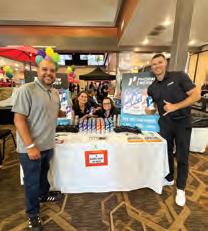

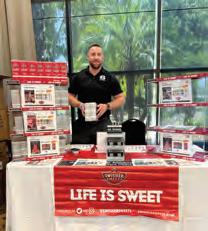
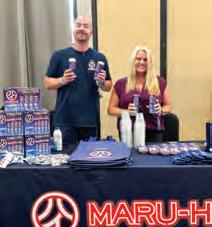



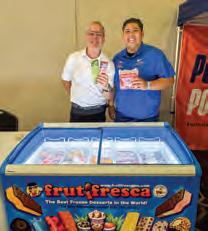


Kids enjoyed a Jump For Adan bounce house, while everyone cooled off with frozen treats from the Kina Ice Truck and savored fresh slices from the URBN Pizza Truck. Franchisees also had the chance to win exciting raffle prizes, making the day both productive and entertaining. The event once again


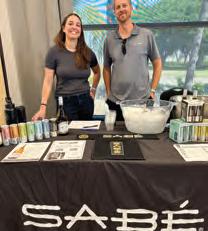
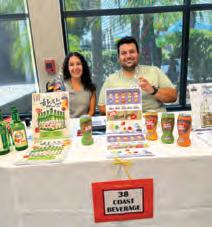

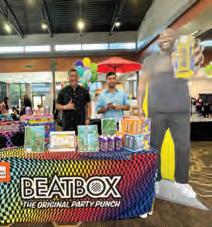


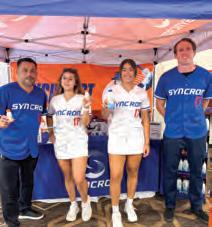




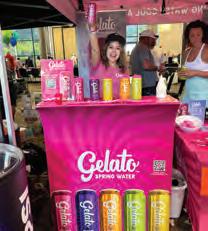
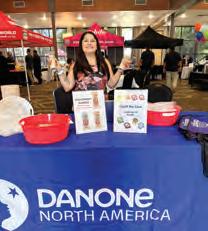
and disciplined cost control. Notably, the U.S. saw a 0.9 percent increase in merchandise margin, while Canada and Europe experienced slight declines due to legislative shifts affecting product mix.
A major highlight was the $1.6 billion acquisition of 270 GetGo Café + Market sites, expanding Couche-Tard’s footprint across five U.S. states. This move, paired with the divestiture of 35 locations to satisfy FTC conditions, resulted in a $66.4 million gain. Fuel performance was mixed: Canadian volumes rose 2.2 percent, while U.S. and European volumes dipped slightly.
“A major highlight of Couche-Tard’s Q1 financials was the acquisition of 270 GetGo Café + Market sites, expanding its footprint across five U.S. states.”
C-Stores Navigate A Shaky First Half
The Convenience Store News 2025 Midyear Report Card paints a picture of an industry in flux, with most c-store categories posting declines in both dollar sales and unit volume. Cigarettes continued their downward trajectory, falling 2.7 percent in dollar sales and 7.7 percent in units, yet the economy/ value segment surged 10.8 percent and 8.5 percent, respectively— suggesting a consumer pivot toward affordability. Other tobacco products (OTP) posted a 5.8 percent increase in dollar sales, driven by smokeless tobacco alternatives (up 43.4 percent in dollars and 32.2 percent in units) and pipe tobacco (up 5.8 percent and 17.9 percent).
Packaged beverages saw modest growth in dollars (1.9 percent) but a 1.2 percent drop in units, with energy drinks leading the charge (up 8.9 percent in dollars and 6.6 percent in units). Beer and malt beverages declined overall, but nonalcoholic beer exploded with 22.3 percent dollar growth and a staggering 99.8 percent unit increase.
In center-store categories, candy dipped 1.7 percent in dollar sales and 6.5 percent in units, though novelty candy bucked the trend with 27.8 percent and 23.3 percent growth. Salty snacks fell 4.3 percent in dollars and 5.8 percent in units, with potato chips and popcorn hit hardest. Edible grocery dropped 2.4 percent in dollars and 4.9 percent in units, but water/ beverage enhancers soared 24.1 percent and 22.9 percent.
General merchandise showed signs of life, with seasonal items up 5.7 percent in dollars and 37.5 percent in units. Health & beauty care posted a 2.3 percent dollar increase but a 1.9 percent unit decline, with vitamins/ supplements as the lone bright spot (up 9.5 percent and 4.9 percent). Despite pervasive uncertainty, NRF’s chief economist cited solid fundamentals—rising personal income, a strong labor market, and stable pricing—as reasons for cautious optimism.
U.S. Job Growth Stalls
The August 2025 jobs report reveals a troubling slowdown in the U.S. labor market, with only 22,000 jobs added—far below expectations—and a revised loss of 13,000 jobs in June, marking the first monthly decline since the pandemic, reported The Washington
Post. The unemployment rate rose to 4.3 percent, its highest level since 2021, signaling that the economy may be entering a vulnerable phase. Sectors such as manufacturing, construction, and government saw notable job losses, while white-collar industries continued to shed positions. Economists warn that the labor market is at “stall speed,” with hiring slowing across nearly all industries except health care and hospitality. The Trump administration’s trade tariffs and immigration restrictions are cited as key factors contributing to reduced labor supply and weakened job creation.
Wage growth has also cooled, rising just 3.7 percent yearover-year, while long-term unemployment climbed to 1.93 million. The federal government lost 15,000 jobs in August alone, and recent college graduates face a 9.3 percent unemployment rate, up sharply from earlier in the year. The labor market’s fragility is further stressed by rising layoffs and unemployment claims, with economists predicting continued softening and a potential recession if job growth remains below the break-even threshold of 50,000 monthly additions.
Consumer
Inflation Surges
U.S. consumer inflation accelerated in August, marking the largest monthly and annual increases since January, driven by rising costs in housing, food, and tariff-exposed goods, reported Reuters. The Consumer Price Index (CPI) rose 0.4 percent month-over-
Member News
continued from page 49
month and 2.9 percent year-overyear, with notable spikes in shelter, supermarket items, and travelrelated services. Tariffs imposed by President Trump have begun to ripple through the economy, as businesses pass on higher import costs to consumers. Food prices surged—tomatoes up 4.5 percent, beef up 13.9 percent year-over-year, and coffee up 20.9 percent—with labor shortages and immigration crackdowns compounding supply pressures. Core CPI, which excludes food and energy, also rose 0.3 percent, reflecting broad inflation across goods and services, including apparel, vehicles, and lodging.
Shoppers Flock To Five Below
Five Below reported a strong second quarter, driven by a surge in consumer demand for low-cost goods amid economic uncertainty, reported The Wall Street Journal. The discount retailer raised its full-year revenue forecast to $4.44–$4.52 billion, up from $4.33–$4.42 billion, and increased its adjusted earnings per share guidance to $4.76–$5.16. CEO Winnie Park attributed the growth to “delivering extreme value,” which attracted new customers and increased transaction volume. Revenue jumped 24 percent year-over-year to $1.03 billion, beating analyst expectations, while same-store sales rose 12.4 percent, well above the projected 8.9 percent. The company’s simplified pricing
“Five Below reported a strong second quarter, driven by a surge in consumer demand for low-cost goods amid economic uncertainty.”
strategy—rounding prices to whole numbers between $1 and $5— proved effective, with shoppers responding positively even to slight price increases. The retailer also saw strong performance in its back-toschool and kids’ categories, with $5 and $7 backpacks selling briskly.
Downtrading & Alternatives Reshape
Nicotine Sales
Amid inflation and tighter regulations, U.S. tobacco consumers are increasingly downtrading— shifting from premium cigarettes to deep discount brands or alternative nicotine products like pouches and vaporizers, reported Convenience Store News. According to Goldman Sachs’ Q2 “Nicotine Nuggets” survey, which covers roughly 46,000 retail locations, cigarette volume declines accelerated, with nearly three-fourths of respondents reporting share gains for deep discount cigarettes. Smokeless and oral nicotine products, especially ZYN, saw robust growth, while Marlboro’s market share continued to slip. Retailers also flagged illicit e-cigarettes as a persistent concern, despite recent import crackdowns, though optimism is rising that these pressures may ease in 2025.
The survey also revealed weakening manufacturer pricing power, with 61 percent of respondents noting that pricing actions are contributing to volume declines. Encouragingly, 76 percent of retailers said the adult nicotine consumer has remained stable or stronger in recent months, up from 47 percent in Q1. This resilience isn’t limited to lowincome shoppers—trade-down
behavior is now evident across income levels. Brands like Velo Plus are performing well, aided by strong promotions, and retailers are cautiously optimistic about the category’s future.
C-Stores Redefine
“Better-for-You”
Food
Convenience stores are rapidly evolving from quick snack stops into full-fledged food destinations, driven by consumer demand for healthier, more diverse grab-andgo options reported Confectionery News. C-store foot traffic has surged nearly 59 percent since early 2021, with monthly growth continuing into 2025, as stores expand their offerings beyond traditional packaged goods to include hot and cold prepared meals, bundled snack-and-beverage combos, and midday solutions that rival fast-casual restaurants.
The lines between grocery, quick-service restaurants, and c-stores are blurring, prompting fierce competition and innovation in foodservice. C-stores are now investing heavily in private-label development and infrastructure— such as Sheetz’s $145 million distribution facility and expansion into Michigan—to support madeto-order meals, self-service kiosks, and drive-thrus. With 87 percent of new store investments in 2022 directed toward foodservice, the industry is clearly betting on fresh, customizable offerings to drive growth and redefine the convenience experience.
Four Pillars To Sustain U.S. Economic Growth
In the wake of sweeping policy

including convenience stores and grocery stores—are considered “high risk” for closure or financial hardship due to federal cuts in the “One Big Beautiful Bill Act,” which reduces SNAP benefits, reported Yahoo News. With $1.3 billion in projected revenue losses for retailers, rural communities face especially severe impacts, as many local grocers depend on SNAP transactions for the majority of their income. • McDonald’s is rolling out lower prices on eight popular combo meals—discounted by 15 percent compared to buying items separately—to win back budget-conscious customers, reported CNN Business. The initiative, backed by corporate financial support for franchisees, includes new $5 and $8 meal deals and a revival of the “Extra Value Meals” branding. • Vermont’s 2020 ban on plastic bags led to a dramatic 91 percent reduction in their use, with researchers crediting the law’s simplicity, strong public support, and effective pre-rollout communication for its success, according to a study by the University of Vermont. • Amazon is investing over $4 billion to expand its rural delivery network, extending service to more than 13,000 zip codes and creating over 100,000 new jobs through programs like DSP, Amazon Flex, and Hub Delivery. This expansion will triple the size of its small-town footprint by 2026, cutting delivery times in half and boosting local economies with flexible, well-paying roles and new opportunities for small business partnerships. • Fast-food chains are rapidly expanding their chicken offerings, driven by soaring beef prices and consumer demand for crispy, indulgent options, reported The Wall Street Journal. With chicken now generating over $53 billion annually for U.S. quick serve restaurants, brands are launching new tenders, wraps, and sandwiches to
changes during the second Trump administration, the National Retail Federation (NRF) recently outlined four key priorities to help stabilize and grow the U.S. economy. First, NRF urges a shift away from broad-based tariffs, which have cost American importers over $100 billion since January 2025 and threaten to raise prices for consumers during peak shopping seasons. Retailers—especially small businesses—are struggling to absorb these costs, which jeopardize both profitability and workforce stability. NRF advocates for a more strategic trade policy that enhances U.S. competitiveness while protecting consumers from inflation.
Second, the federation is pushing for passage of the Combating Organized Retail Crime Act, which has bipartisan support and is designed to provide law enforcement with resources to address rising theft and violence in retail environments. With over 260 retailers backing the bill, NRF sees it as essential to safeguarding both economic and community well-being.
The third priority centers on reforming the payments ecosystem, where Visa, Mastercard, and major banks continue to dominate, driving up swipe fees that cost U.S. businesses $187.2 billion in 2024 alone. NRF supports the Credit Card Competition Act to introduce fairer fees and foster innovation, especially as digital assets and stablecoins gain traction.
Lastly, NRF calls for immigration reform that balances security with workforce sustainability. Retailers rely heavily on essential foreignborn workers, and recent policy
shifts—such as work authorization terminations—have disrupted operations. NRF proposes modernizing visa programs and streamlining legal pathways to ensure a stable labor force.
Grocery Prices Fuel Financial Stress
A new AP-NORC poll reveals that nearly all U.S. adults are feeling the pressure of rising grocery costs, with about half identifying it as a “major” source of stress and another third calling it a “minor” one, reported the Associated Press. This concern spans income levels and age groups, with even older adults—who are less likely to stress over housing or savings—reporting anxiety about food expenses. The impact of President Trump’s tariffs is cited as a contributing factor, compounding inflation and driving up prices on everyday essentials. Among low-income households earning under $30,000 annually, 64 percent say grocery costs are a major stressor, while even in higherincome brackets, only 20 percent report no concern at all. The poll also highlights how food insecurity is being mitigated for some seniors through local food banks, though reliance on such services underlines the fragility of many Americans’ financial situations.
“Nearly all U.S. adults are feeling the pressure of rising grocery costs, with about half identifying it as a ‘major’ source of stress.”
Monster Energy Contest Winners Announced
Two lucky franchisees walked away with Monster Energy-branded electric bikes during the NCASEF 49th Annual Convention and Trade Show in Anaheim. Harjinder Singh of Northridge, California, and Sukhi Dhillon of Frederick, Colorado, were the winners of Monster Energy’s trade show contest, adding an exciting highlight to the event.



continued from page 51
meet the growing consumer appetite. • Keurig Dr Pepper is nearing an $18 billion acquisition of Amsterdam-based coffee company JDE Peet’s, with plans to consolidate their coffee and beverage operations before eventually splitting them into separate entities—effectively reversing the 2018 merger strategy that brought Keurig and Dr Pepper together, reported The Wall Street Journal. The move reflects mounting tariff pressures on coffee imports and intensifying competition. • AriZona Beverage is considering raising the iconic 99-cent price of its tall iced tea cans due to a new 50 percent tariff on imported aluminum, despite 80 percent of the company’s can sheet metal coming from recycled U.S. sources, reported The Hill. • Wawa recently broke ground on its first two Tennessee locations, marking the start
of a broader expansion plan that includes six new stores in 2026 and up to 50 over the next decade in the state. Each store will represent a $7.5 million investment and create approximately 35 jobs. • Walmart has expanded its employee discount to include nearly all grocery items—such as milk, meat, and frozen foods—offering a 10 percent savings to its 1.6 million U.S. workers after their first 90 days, in response to rising inflation concerns driven by new tariffs, reported CNBC. • Amazon has expanded its Same-Day Delivery service to include thousands of fresh grocery items—such as produce, meat, seafood, and frozen foods—now available to Prime members in over 1,000 U.S. cities, with plans to reach 2,300 by the end of 2025. • The U.S. government recently halted the issuance of worker
visas for commercial truck drivers, citing concerns over road safety and the impact of foreign drivers on American livelihoods, reported CBS News. The decision comes amid a nationwide shortage of 60,000 truck drivers and follows recent policy shifts emphasizing English proficiency and stricter vetting protocols. • PepsiCo recently announced that it is increasing its investment in Celsius Holdings with a $585 million deal that raises its ownership stake to 11 percent. PepsiCo is also transferring its Rockstar Energy brand to Celsius and integrating Celsius’ Alani Nu into PepsiCo’s U.S. and Canadian distribution network. • McLane Company recently launched a new tech hub in Austin, Texas, to accelerate its digital transformation and support its expanding Information Technology and Digital
Sukhi Dhillon
Harjinder Singh
Value Attracts Consumers To Loyalty Programs
Consumers are increasingly drawn to loyalty programs that deliver clear, measurable value— especially fee-based models that allow users to track savings over time. A Kobie survey of 5,000 global participants reveals that 85 percent of respondents want better discounts, and two-thirds say they immediately recognize the worth of paid programs once they see their annual savings. Surprise earning opportunities also appeal to more than 80 percent of consumers, signaling a desire for dynamic, engaging reward structures. Grocers and retailers are responding by rethinking how rewards are earned and redeemed, with many exploring tiered systems and experiential perks to differentiate their offerings. The survey also reveals that consumers engage with loyalty programs in distinct ways: about half are “savers” who accumulate points with a specific goal in mind, one-third are “collectors” who earn without a set plan, and only 20 percent are “spenders” who redeem rewards immediately. This behavioral insight is prompting grocers to tailor their programs to different user types, balancing instant gratification with longterm engagement. Retailers like Albertsons and Sprouts Farmers Market are investing heavily in loyalty infrastructure, with Albertsons reporting a 14 percent year-over-year membership increase and Sprouts preparing for a chainwide launch of its first loyalty program.

Drone Delivery Nears Takeoff Across U.S.
After years of limited rollout, drone delivery in the U.S. is poised for major expansion thanks to a proposed FAA rule that would allow drones to fly beyond an operator’s line of sight, reported the Associated Press. This regulatory shift could unlock access to millions of households, removing the need for waivers and air carrier certification that previously restricted longdistance drone operations.
Companies like Walmart, Amazon, and DoorDash—already testing drone deliveries in select markets— are preparing to scale up. Walmart and Wing plan to expand from 18 stores in Dallas to 100 across five major cities by next summer, while Amazon is broadening its Prime Air service to include Dallas, San Antonio, and Kansas City. Despite the futuristic appeal, drone delivery still faces hurdles. Costs remain high—averaging $13.50 per delivery compared to $2
“Drone delivery in the U.S. is poised for major expansion thanks to a proposed FAA rule that would allow drones to fly beyond an operator’s line of sight.”
for traditional methods—and drones are limited by weather, payload capacity, and public concerns over noise and privacy. However, companies are optimistic: Zipline’s drones can travel up to 120 miles round trip, and Wing’s system allows one pilot to oversee 32 drones. Consumer response has been largely positive, with some areas reporting increased overall delivery orders. As technology improves and regulations evolve, industry leaders believe drone delivery is finally reaching the “planetary alignment” needed for widespread adoption.
C-Stores Chase Cravings Over Coupons
As economic pressures continue to shape consumer behavior, the Kearney Consumer Institute’s latest report reveals that shoppers are not just seeking low prices— they’re craving small indulgences and curated experiences. While convenience stores have responded with aggressive discounting and promotional signage, many consumers feel these tactics are overplayed. Instead, they’re looking for retailers to help them discover new snacks, beverages, and menu items that offer moments of joy. The report found that 68 percent prioritize taste over price, and nearly half seek a balance between affordability and quality. C-stores, traditionally strong in impulse-driven purchases, are wellpositioned to meet this demand by spotlighting premium treats and rotating fresh offerings that feel personalized and exciting.
Exclusive product launches—such as proprietary ice cream flavors or signature donuts—are helping






c-stores stand out, while platforms like TikTok are influencing food discovery and driving traffic. Interestingly, consumers aren’t asking for more variety; 62 percent say they already find enough options. What they want is a curated selection that simplifies decisionmaking, a strategy that mirrors successful models like Aldi and Trader Joe’s.
Walmart Holds Steady While Target Faces
Headwinds
In Q2 2025, Walmart demonstrated notable resilience in foot traffic despite a major e-commerce expansion, with same-store visits fluctuating only slightly between +0.8 percent and -1.6 percent year-over-year from May through July, according to Placer.ai. This stability suggests

that Walmart’s digital growth— strengthened by initiatives like one-hour express delivery and a marketplace of over 500 million items—is complementing rather than cannibalizing its physical store presence. The company’s rebranding campaign, “Walmart, Who Knew,” highlights its push into premium discretionary offerings, aiming to attract

customers visiting at
(IT&D) team, which includes experts in AI, cloud engineering, cybersecurity, and data analytics. McLane said its new tech hub will enhance its digital supply chain and operations through advanced AI-powered solutions. • On September 9, 1945 computer pioneer Grace Hopper discovered the first known case of a computer “bug.” It turned out to be an actual moth found between the relay contacts of an early Harvard Mark II computer. Hopper taped the dead moth into her logbook report. • BIC recently partnered with the law firm Kilpatrick Townsend & Stockton to intensify its crackdown on counterfeit pocket lighters, citing threats to consumer safety and brand integrity. The company
has launched legal actions, issued cease-and-desist orders, and trained U.S. Customs officials to intercept fake products. • Workplace violence is on the rise across the U.S., with 30 percent of employees reporting they’ve witnessed incidents involving coworkers—up from 25 percent in 2024—and 15 percent saying they’ve been direct targets themselves, up from 12 percent in 2024, according to a recent Traliant survey. The findings have prompted calls for mandatory state workplace violence prevention laws like those in California and New York. • Sheetz recently celebrated the opening of its 800th store in Raleigh, North Carolina, with a grand event that included community donations, cus-
least four times a month, Walmart’s omnichannel strategy appears to be paying off, positioning it well for continued outperformance amid economic caution.
Target, on the other hand, has faced persistent traffic declines since February 2025, with same-store visits down between 2.2 percent and 9.7 percent year-over-year. While its digital sales rose 4.7 percent— driven by over 35 percent growth in same-day delivery—this wasn’t enough to offset a 5.7 percent drop in in-store sales. Target’s challenges stem largely from weakened demand in discretionary categories and recent policy changes. As tariffs loom and consumer preferences evolve, Target’s path forward will depend on its ability to reinvigorate its discretionary appeal without losing sight of its core identity, the report states.
tomer giveaways, and a promotional offer of two free hot dogs with any purchase at all locations through September 2. • Hershey plans to raise candy prices by double digits due to persistently high cocoa costs, which continue to strain its core chocolate brands like Reese’s and Hershey’s Kisses despite easing from record highs. To mitigate reliance on cocoa and inflationary pressures, the company is expanding into alternative snack categories—including gummies, salty snacks, and organic options. • In the largest operation of its kind, the FDA and U.S. Customs and Border Protection recently seized 4.7 million units of unauthorized e-cigarettes—valued at $86.5 million— continued on page 58
Legislative Update
SNAP Purchase Restrictions Spark Retailer Concerns
A growing number of U.S. states are pursuing federal waivers to restrict what items can be purchased with Supplemental Nutrition Assistance Program (SNAP) benefits, targeting products like soda, energy drinks, and candy, reported NACS Daily. The USDA has already approved waivers for Nebraska, Indiana, Iowa, Utah, Idaho, and Arkansas, with implementation dates beginning January 1, 2026. These waivers are framed as public health initiatives, but they introduce major operational challenges for SNAP retailers—especially convenience stores—who must overhaul point-of-sale systems, train staff extensively, and navigate complex state tax codes to comply. Retailers warn that these fragmented, state-specific restrictions will erode the consistency and predictability that have long defined SNAP, potentially forcing some stores to stop accepting benefits altogether. This poses a serious threat to food access, particularly in rural and underserved urban areas where convenience stores often
“RETAILERS WARN THAT THESE FRAGMENTED, STATESPECIFIC SNAP RESTRICTIONS COULD FORCE SOME STORES TO STOP ACCEPTING BENEFITS ALTOGETHER.”
serve as the only nearby source of groceries. The National Association of Convenience Stores (NACS) is urging policymakers to consider the operational burden and unintended consequences of these waivers, stating that SNAP’s strength lies in its flexibility and dignity for recipients.
Tobacco Policy Highlights
There has been a recent wave of tobacco-related legislative and regulatory activity aimed at tightening control over sales and distribution, reported Convenience Store News. In Maine, a new law signed by Gov. Janet Mills will prohibit pharmacies from selling tobacco products starting April 2026, with steep daily fines for violations. The state is also implementing steep tax hikes across all tobacco categories, including vapor products and pouches. Massachusetts is considering several bills, including one that would repeal the flavored tobacco ban and another that would prohibit online tobacco sales. Meanwhile, New Jersey’s North Bergen township implemented a new licensing law for tobacco retailers, introduced child-resistant packaging requirements, and will become the first in the state to ban all flavored tobacco products by January 2026. Readington Township also updated its ordinance to reinforce the state’s age restrictions and flavored vape ban.
California is introducing a new Unflavored Tobacco List (UTL),
requiring tobacco companies to pay application and renewal fees and certify compliance with flavor restrictions. La Habra, California has placed a moratorium on smoke shops, exploring stricter policies to curb youth access. Colorado’s Eagle joins 13 other municipalities in banning flavored tobacco, and Illinois has raised its tobacco tax from 36 percent to 45 percent, now including nicotine pouches like ZYN. Louisiana has enacted distancing rules for vape shops, barring them from operating within 500 feet of schools, churches, and other sensitive locations.
Other states are making notable moves as well. In Ohio, a Franklin County Appeals Court upheld the authority of cities to enforce their own tobacco laws, striking down a state-level preemption attempt. Wisconsin introduced a bill to redefine “cigarette” for tax purposes, creating separate categories for combustible and heat-not-burn tobacco products with different tax rates.
Nebraska will impose a 20 percent retail tax on alternative nicotine products, and Oregon is introducing a tiered excise tax on nicotine pouch packaging. Rhode Island is expanding its definition of “other tobacco products” to include pouches, taxing them at 80 percent of wholesale cost. Washington will apply its existing 95 percent tobacco tax to all nicotine-containing products, synthetic or tobacco-derived.
Finally, Roanoke, Virginia, is considering a $20,000 annual fee for vape and tobacco shops, excluding convenience stores.
Fuel Retailers Push Back Against RECHARGE Act

Fuel retailers and industry groups including NATSO, SIGMA, and NACS are strongly opposing the RECHARGE Act, a bill introduced by Senator Jeff Merkley that would allow commercial EV charging stations at federally operated highway rest areas. These organizations argue that the legislation undermines decades-old federal law designed to promote private investment and competition by prohibiting commercial services at rest stops. They warn that allowing states to install EV chargers at rest areas would create an unfair playing field, discouraging private sector investment and stalling the development of a robust, consumer-friendly EV charging network. NATSO and SIGMA stated that the bill would “inject a nationwide hurdle” rather than expand access, while NACS cautioned that it could permanently disadvantage EV infrastructure by disrupting the competitive dynamics that built the current refueling system. The opposition comes amid broader federal efforts to expand EV infrastructure through publicprivate partnerships. The U.S.
Department of Transportation recently issued guidance encouraging states to locate EV chargers where the site host is also the station owner, ensuring better maintenance and consumer experience. Fuel retailers have already begun investing heavily in EV charging stations at locations near highway exits, which offer amenities like food, restrooms, and security—key factors for longdistance travelers. A coalition of businesses, including truck stops, convenience stores, restaurants, and local governments, has sent a letter urging lawmakers to reject the RECHARGE Act. They argue that thousands of existing facilities are already well-positioned to support EV adoption and that federal policy should reinforce—
“FUEL RETAILERS AND INDUSTRY GROUPS WARN THAT ALLOWING STATES TO INSTALL EV CHARGERS AT REST AREAS WOULD CREATE AN UNFAIR PLAYING FIELD, DISCOURAGING PRIVATE SECTOR INVESTMENT.”
not replace—private sector leadership in building out the national charging network.
Federal Judge Overturns Debit
Swipe Fee Rule
A U.S. District Court has ruled that the Federal Reserve’s 2011 regulation on debit card swipe fees was set higher than Congress intended, siding with Corner Post—a North Dakota-based truck
stop and NACS member—in a lawsuit challenging the Fed’s interpretation of the Durbin Amendment, reported NACS Daily. Judge Daniel Traynor concluded that the Fed unlawfully expanded the scope of allowable cost recovery by including fixed and fraud-prevention expenses in its formula, beyond the two categories—authorization and settlement—explicitly permitted by the statute. The ruling vacates the existing regulation but places the decision on hold pending appeal, to avoid creating an unregulated interchange fee market. The Federal Reserve may still proceed with its 2023 proposal to lower the rate, which remains under review. The decision has major implications for retailers, who have long argued that inflated debit fees unfairly enrich banks and card issuers at the expense of Main Street businesses. According to NACS, merchants saved an estimated $9 billion annually under the regulated rate, yet still paid $38.7 billion in swipe fees in 2024 alone. The ruling could prompt the Fed to revise its rules and reduce inflationary pressure tied to transaction costs. NACS General Counsel Doug Kantor called the decision “well-reasoned,” emphasizing that the current fee structure allows banks to collect billions beyond competitive margins. With the Supreme Court having remanded the case for substantive review, the outcome may reshape how debit fees are calculated and regulated going forward.
SEI NEWS

7-Eleven IPO To Pave Way For Expansion
In a strategic move to unlock faster growth, Seven & i Holdings CEO Stephen Dacus recently confirmed plans for a U.S. IPO of the company’s North American 7-Eleven operations, slated for late 2026, reported Seeking Alpha. The offering is expected to facilitate increased debt capacity, enabling rapid store expansion and targeted acquisitions across the U.S. This pivot follows sustained shareholder pressure for stronger returns and comes alongside a $13 billion stock buyback and divestiture of the company’s supermarket unit. The IPO would further distance Seven & i from a recently withdrawn $47 billion takeover bid by Canadian competitor Alimentation CoucheTard, which faltered amid regulatory concerns and what Dacus described as a lack of constructive engagement.
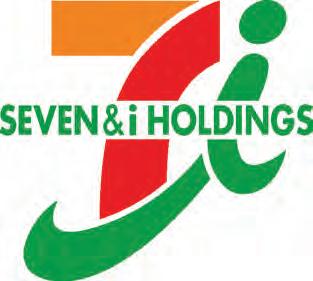
Seven & i Doubles Down On U.S. Growth
Seven & i Holdings recently unveiled an ambitious six-year strategy aimed at transforming
“Seven & I plans to add 1,300 stores in North America and 1,000 net new outlets in Japan, and upgrade 5,000 Japanese stores with modernized features.”

its operations and significantly boosting corporate value after fending off a takeover bid from Canada’s Alimentation CoucheTard, reported Nikkei Asia The plan targets a 44 percent profit increase by fiscal 2030, with annual growth averaging 7 percent, and projects earnings per share to surge 2.4 times to ¥210.
Key components include expanding its global convenience footprint—adding 1,300 stores in North America and 1,000 net new outlets in Japan—and upgrading 5,000 Japanese stores with modernized features. The company will also roll out restaurants in 1,100 stores and expand its 7Now delivery service across North America, extending to 200 new outlets annually.
CEO Stephen Hayes Dacus described the initiative as a bold, globally coordinated roadmap reflecting Seven & i’s renewed focus on operational efficiency and shareholder returns.
The strategy was prompted by mounting investor pressure and the fallout from CoucheTard’s failed acquisition bid, which offered ¥2,600 per share—above current market

continued from page 55
primarily originating from China, many of which were mislabeled to evade import scrutiny and safety checks. • 7-Eleven, Inc. has agreed to pay $1.2 million to settle allegations that 16 of its stores in Washington, D.C. violated a local ban on selling vaping devices within a quarter-mile of middle and high schools, despite receiving prior notice of the law before it took effect in October 2022, reported WTOP news. As part of the settlement, the company must cease all vape-related sales and marketing near schools, implement staff training and franchise monitoring, and terminate franchise agreements if stores repeatedly violate the law. • Pilot Company, General Motors, and EVgo have expanded their collaborative EV fast-charging network to over 200 locations across nearly 40 states, deploying nearly 850 high-power stalls to support coast-to-coast electric vehicle travel. Designed for convenience and reliability, these stations—many located at Pilot and Flying J travel centers—offer amenities like overhead canopies, pull-through stalls for trailers, and Plug and Charge functionality. • RaceTrac recently announced a $566 million all-cash acquisition of Potbelly Corporation, a sandwich chain with over 445 locations across 30 states, as the retailer seeks to expand beyond traditional convenience retail into full-scale foodservice. • Instacart has partnered with Vroom Delivery to bring its Carrot Ads retail media platform to 3,500 convenience stores across the U.S., enabling small and mid-sized retailers to access Sponsored Product and Display ads through Instacart’s self-service tools. personalization while helping convenience stores compete more effectively in the e-commerce space. • The NACS Foundation’s 7th annual 24/7 Day on July 24 united over 100 retail brands and supplier partners across 48 states to honor first re-
value—and collapsed amid antitrust hurdles and disputed disclosures. Dacus emphasized the company’s intent to pursue growth independently, slashing ¥81 billion in headquarters expenses by halving overhead post-divestiture of noncore units like York HD and Seven Bank. With a total ¥3 trillion earmarked for capital investments and acquisitions through 2030, Seven & i plans to push its global store count past 100,000.
SEI Reinvents Its Retail Footprint
7-Eleven is undergoing a strategic transformation, closing over 500 underperforming stores while reinvesting in a bold new retail vision, reported Geek Spin. Rather than signaling retreat, the closures are part of the company’s “Fundamental Store Optimization Program,”

“SEI is doubling down on innovation, preparing to launch hundreds of upgraded ‘Standard’ stores that blend convenience with culinary appeal.”
designed to streamline operations and refocus on high-performing locations. Declining foot traffic and shifting consumer habits— especially a steep drop in cigarette sales—prompted the move. But behind the scenes, SEI is doubling down on innovation, preparing to launch hundreds of upgraded “Standard” stores that blend convenience with culinary appeal. These new stores feature inhouse kitchens like Laredo Taco and Raise the Roost Chicken, and early results are promising: same-store sales are up 13 percent

sponders, medical personnel, and American Red Cross volunteers who serve communities around the clock. Highlights included heartfelt store-level celebrations, major donations to the Red Cross, and the announcement of three First Responder of the Year Award winners. • Casey’s General Stores has achieved significant success by targeting small towns, with 72 percent of its stores located in communities of fewer than 20,000 residents, reported CNBC. Made-from-scratch pizza has become a cornerstone of the Casey’s
brand, and the popularity and perceived quality of Casey’s pizza have played a key role in attracting loyal customers and distinguishing the company within the convenience store market. • Anheuser-Busch recently announced that it is investing over $9 million to upgrade brewing equipment at its Cartersville, Georgia facility, which will boost production of Michelob Ultra—the fastest-growing beer brand in the U.S. and the top seller in the Southeast. The company said the project is part of a broader $300 million investment across its U.S. opera-

compared to legacy locations, with projected daily revenue reaching $8,219 once fully matured. CEO Joe DePinto announced plans to open 125 of these new stores in 2025, with over 500 more slated by 2027.
Itochu Eyes Strategic Stake In Seven Bank
Japanese trading giant Itochu has recently entered into talks with Seven Bank, the financial arm of the 7-Eleven convenience store chain, to explore a capital and business alliance aimed at expanding its consumer financial services footprint, reported Nikkei Asia. The discussions may lead to Itochu acquiring up to a 20 percent stake in Seven Bank through a combination of treasury shares and institutional holdings. Seven Bank’s extensive ATM network—28,000 units across Japan—offers Itochu a strategic opportunity to deepen its
continued on page 60
tions. • BP plans to cut approximately 6,200 corporate jobs—15 percent of its office-based workforce—by the end of 2025, significantly expanding its earlier layoff projections as part of a $2 billion cost-reduction strategy. The restructuring, which has already yielded $1.7 billion in savings, disproportionately affects BP’s customers and products segment—including its global convenience store operations—and also includes the elimination of 4,400 contractor roles. • Pharmacy customers are increasingly favoring supermarkets, mass mer-
SEI NEWS

presence in everyday financial transactions, especially as its subsidiary FamilyMart already operates 16,000 ATMs via E-net and Japan Post Bank.
The potential alliance comes amid significant restructuring within Seven & i Holdings, which recently reduced its stake in Seven Bank and reclassified it from a consolidated subsidiary to an equity-method affiliate. This shift aligns with the company’s plan to streamline operations and focus more narrowly on its core convenience store business. Seven Bank’s recent acquisition of shares from group companies like Ito-Yokado and York Benimaru has increased its selfheld stake to 17 percent, while Seven-Eleven Japan remains the largest shareholder with around 40 percent voting rights.
SEI Recruits Supply Chain Pro
SEI recently appointed Joshua Dolan as senior vice president of demand chain, tasking him with expanding and optimizing the company’s enterprise-wide logistics and execution capabilities, reported C-Store Dive. Dolan previously led supply chain operations at GXO Logistics, Cardinal Health, Amazon, and Target. His background includes overseeing pharmaceutical logistics, inventory automation, and global distribution platforms. His role will be to refine the 7-Eleven’s logistics infrastructure to support growth and operational efficiency.
Seven & i Spins Off Supermarket Branch
Seven & i Holdings has officially divested its supermarket subsidiary, York Holdings Co., selling a 60 percent stake to Bain Capital for ¥814.7 billion ($5.5 billion) in a strategic pivot toward its core convenience store business, reported The Mainichi. The move includes shedding underperforming assets like the Ito-Yokado chain, which once operated 182 outlets but has

“Seven & i Holdings has officially divested its supermarket subsidiary, York Holdings Co., selling a 60 percent stake to Bain Capital.”
recently closed many due to low margins. York Holdings also encompasses Denny’s Japan, The Loft, and Akachan Honpo, all of which now fall under Bain’s majority control. Seven & i and its founding family retain the remaining 40 percent, signaling a continued, albeit reduced, stake in the diversified retail portfolio.
Phorm Energy Hits 7-Eleven
Anheuser-Busch has officially entered the energy drink space by launching Phorm Energy in partnership
with St. Louis-based 1st Phorm and UFC President Dana White, now available at 7-Eleven stores nationwide following an earlier online debut, reported Seeking Alpha. The drink targets consumers seeking both physical and mental performance, offering 200mg of caffeine from green tea extract, an electrolyte blend for hydration, and zero sugar or artificial flavors. Available in four bold flavors—Blue Blitz, Orange Fury, Grape Smash, and Screamin’ Freedom—Phorm Energy is positioned as a lifestyle product for those who “show up and do the work.” A promotional offer runs through year-end, with two cans priced at $5 for customers aged 18 and older. The launch has sparked strong online interest, with Google search trends for “Phorm Energy” surging since June.
SEJ Tests In-Store Robots

Seven-Eleven Japan recently launched a trial of worker robots at a Tokyo store to address the country’s growing labor shortage and rising wage costs, reported Kyodo News . The program includes robots that stock shelves with bottled drinks and canned alcohol, clean floors and windows, and even support late-night cashier duties via remote customer service screens. Additionally, the company is testing delivery robots to transport goods directly to customers’ homes, indicating a broader push toward automation in retail operations. These robots

continued from page 59
chandisers, and mail-order services over traditional chain drug stores, citing better staffing, trust in pharmacists, and faster prescription fulfillment as key advantages. The 2025 J.D. Power U.S. Pharmacy Study shows supermarkets like Wegmans and Publix outperforming pharmacy chains in customer satisfaction, while mail-order providers such as PillPack by Amazon lead in digital convenience and cost-saving features. • White Castle recently launched its first robotic food delivery pilot in Chicago, partnering with Coco Robotics, Uber Eats, and Checkmate to streamline operations and enhance customer experience. The program allows customers to receive slider orders via autonomous Coco robots, which integrate with White Castle’s POS system through Checkmate. • Mexican retailer FEMSA’ U.S. expansion is moving forward strongly, with 40 former Delek convenience stores rebranded under the Oxxo banner and early sales results showing promise, especially with the rollout of proprietary offerings like Andatti coffee, reported C-Store Dive. • Tesla recently opened a 24/7 retro-futuristic diner in Los Angeles that doubles as an EV charging station and drive-in theater, featuring 80 Supercharger stalls, rooftop movie screens, and a fully electric kitchen serving themed menu items like the “Tesla Burger” with “Electric Sauce.” • Lidl accelerated its East Coast expansion with four new store openings between late July and mid-August in Maryland, New Jersey, and New York, bringing its U.S. footprint to over 185 stores across nine states and Washington, D.C. Lidl’s foot traffic grew 4.9 percent year-over-year in the first half of 2025—outpacing the grocery industry average.• Coca-Cola plans to launch a U.S. version of its signature cola made with cane sugar this fall, offering an alternative to its standard formula that uses high-fructose corn syrup. While the new product won’t replace existing offerings, Coca-Cola sees it as a way to broaden consumer choice and respond to growing demand for more natural sweeteners, echoing its successful sugar-based formulas already sold in markets like Mexico. • Wawa recently opened its first West Virginia location in Inwood with a grand celebration featuring giveaways and free coffee. During the event, Wawa executives announced continued investment in the state, launched a charitable hoagie campaign benefiting a local food bank, and announced the brand’s broader expansion efforts—including plans to build up to 90 stores in that state over the next decade. • Electrify America has partnered with Royal Farms to install over 55 Hyper-Fast EV chargers across eight Maryland locations, with speeds up to 350 kW that can charge compatible vehicles in as little as 20 minutes. The companies said this initiative enhances convenience for drivers by integrating high-speed charging with access to Royal Farms’ fresh food and beverages. • Jacksons Food Stores recently acquired 24 convenience stores from Redwood Oil Company in Northern California, including 17 locations featuring the Aztec Grill, a proprietary Mexican food concept known for fresh, made-to-order offerings. • Higher-income shoppers return more items than others—about 5.3 percent of what they buy—because they can afford to shop “just in case” and send things back if they don’t like them, reported CNBC. As returns rise across all income levels, stores are making it harder to return items by charging fees and shortening return windows to cut down on the nearly $890 billion in yearly losses. • Nearly three-quarters of Americans say clean living is important to them, with top associations including healthy eating (71 percent), avoiding chemicals (58 percent), and maintaining a clean environment (57 percent), reveals new research from Numerator. Despite strong interest, affordability remains a major barrier—65 percent cite price as a challenge.

are meant to ease the burden on store operators while maintaining service quality and operational efficiency.
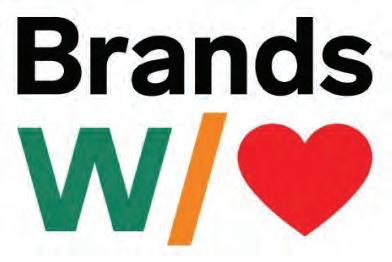
SEI Launches 2026 Brands With Heart Showcase
7-Eleven, Inc. recently opened applications for its seventh annual Brands with Heart showcase, an accelerator program designed to spotlight emerging consumer packaged goods (CPG) brands. The initiative offers selected companies the chance to feature their products in 7-Eleven, Speedway, and Stripes stores across the U.S., with a focus on innovation in snacks, beverages, and frozen treats. Applications are open through October 13, 2025, and brands are encouraged to emphasize what makes their offerings distinctive—whether it’s bold flavor, inventive packaging, or purpose-driven values. The program culminates in early 2026 with educational sessions and direct pitch opportunities to category managers, paving the way for in-store testing and potential national expansion.
Vendor FOCUS
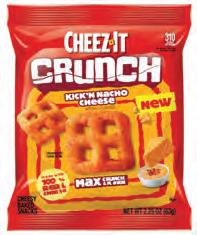

Cheez-It Crunch is now at 7-Eleven in bold new flavors that deliver mega crunch, bold taste, and big sales opportunities.
Boost Basket Rings With New Cheez-It Crunch
Cheez-It is bringing something unlike anything it’s done before … get ready for the boldest crunch yet. Introducing Cheez-It Crunch, a new innovation that combines 100 percent real cheese with intense flavor, a bigger, more satisfying crunch and an unexpected shape designed to deliver bold taste in every bite. Snackers are seeking multi-sensorial snacking experiences that deliver a big bite, intense flavor and unique texture. Using social trends as one of many inputs in food development, our innovation teams found that there has been a 55 percent increase in crunchy snack social videos over the past year (1), including growing demand for new and adventurous food experiences. CheezIt Crunch delivers on this demand, offering bold flavor, satisfying crunch and exciting new texture.
Cheez-It Crunch delivers the signature cheesy flavor fans know and love—but shakes up snack time with a new crave-worthy taste and a mega crunch in every bite. Its bold new shape—twisted, layered and packed with visible seasoning— creates a flavor-forward snacking experience designed to satisfy cravings. Cheez-It Crunch comes in two deliciously daring flavors, all made with 100 percent real cheese:
• Cheez-It Crunch Kick’n Nacho Cheese: Imagine the taste of tangy nacho cheese, now in one crunchy, cheesy bite. Classic cheddar cheese is layered with a kick of nacho spice, for a satisfyingly spicy and savory flavor.
• Cheez-It Crunch Zesty Jalapeno Cheddar: Combines the iconic Cheez-It cheddar taste with a bold kick of spicy jalapeno. The initial cheesy flavor is followed by a zesty heat that builds with each bite.
Fans can get their hands on Cheez-It Crunch Kick’n Nacho Cheese and Cheez-It Crunch Zesty Jalapeno Cheddar in single-serve bags at 7-Eleven stores starting in October ahead of the full product rollout.
(1) According to social data from Tubular for “Crunchy snack/chip,” 55 percent increase in video upload count over the past 12 months.
Hostess Suzy Q Returns In Single Serve
Hostess is making waves with the return of its classic Suzy Q, now available in a convenient single-serve format. Billed as the brand’s “Greatest Comeback,” Suzy Q sticks to the beloved recipe fans remember—two generous layers of soft, airy chocolate cake filled with lightly whipped crème.
At $2.79 SRP with a $0.22 discount, this is the biggest Hostess snack cake yet, offered in an 8-count caddy for convenience. Dedicated marketing support, including digital advertising targeting high-value shoppers, ensures strong visibility, while Hostess continues to win in the marketplace with innovative products that are highly incremental to the category. Available via Core-Mark (Code 537172) and McLane (UIN 915977), Suzy Q is positioned to reconnect with loyal fans while attracting new customers who crave indulgence from the category leader.
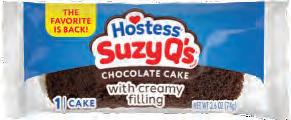
Grow Your Candy Sales With Sour Patch Kids & Swedish Fish
It’s no secret that American household budgets are tighter than ever and that nonessentials, increasingly, are getting squeezed out. To stay ahead of the curve, 7-Eleven franchisees can win share by understanding what motivates their consumers.
Even in tough times, candy is a consistent staple and sells well. Candy is generally cheap enough to fit the budget and parents don’t want to deprive kids of small indulgences even if times are tough.
Candy in general is a safe bet, but nonchocolate candy revenues are growing 8 times faster than chocolate. Why? Because non-chocolate candy offers a range of exciting flavors and possibilities that chocolate doesn’t. That makes non-chocolate candy like SOUR PATCH KIDS an exciting and accessible indulgence any family can fit into the budget to make a grocery trip more fun.
Family favorite non-chocolate candies like SOUR PATCH KIDS and SWEDISH FISH can help recover lost trips from key shopper groups because non-chocolate candy outperforms the candy market with multicultural households
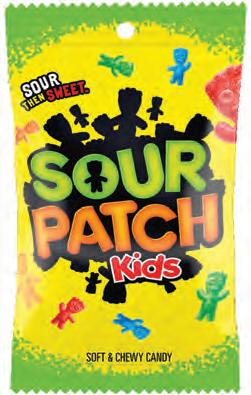

Sour Patch Kids and Swedish Fish score high for strong overall liking.
and households with kids. And, overall, 86 percent of consumers are interested in SOUR PATCH KIDS products. SOUR PATCH KIDS scores 8.1 out of 9 and SWEDISH FISH scores 7.7 out of 9 for strong overall liking, making both candies solid bets for any candy aisle.
Classic snack cake Suzy Q is back— bigger, better, and single serve.
Unlock Bigger Tobacco Profits With The Al Capone Advantage
In a category where every inch of shelf matters, Al Capone Cigarillos offers 7-Eleven a straightforward opportunity for higher returns and increased customer visits. The brand’s global reputation is undeniable—Al Capone ranks as the second largest cigarillo brand in the world, and its growth shows no signs of slowing down. MSAi data indicates that Al Capone is one of the leading premium natural leaf cigarillos on the rise, highlighting a trend where consumers are increasingly choosing quality and consistency. Al Capone Leaf Wraps are highly successful, with all three SKUs ranking in the top eight of their categories and recently becoming the number one natural leaf wrap in the U.S.
The excitement continues with Al Capone’s latest innovation, the Jamaican Blaze Non-Filter 2PK Cigarillo (SLIN #327203), now available at 7-Eleven. This new pack format is crafted to encourage trial among adult consumers and foster repeat purchases, ultimately guiding them toward larger 10PK sales that boost both volume and profitability.
Now is the perfect moment for 7-Eleven retailers to leverage this potential. Showcase the complete Al Capone Cigarillo and Wrap lineup, merchandise with confidence, and embrace a product designed to enhance both basket size and margin. Join the


Any 7-Eleven franchisee looking to put a little fun back into their candy aisle, a little padding on their budget, and smiles on customers’ faces should look to SOUR PATCH KIDS and SWEDISH FISH for small treats everyone loves to eat.
Vendor FOCUS

movement of those benefiting from the momentum of this industry rising star and boost your tobacco portfolio with the premium appeal of Al Capone Cigarillos and Wraps.
Ryde: Wellbeing Functional Shots Designed For Daily Life
Ryde: Wellbeing’s 2-ounce functional shots are now available to 7-Eleven franchisees nationwide, following a strong launch in Texas. The line includes three varieties, with 7-Eleven featuring two: (1) Energize for a boost when you need it* and (2) Focus to support alertness.*
Each formula is built with scientifically backed key ingredients and powered by the proprietary Ryde: Ryplenish blend. Packaging features sleek, recyclable aluminum bottles with bold designs for standout shelf appeal.
For franchisees, Ryde: delivers:
• Potential 50 percent+ gross profit margins per unit;
• Placement in the 2026 Promotional Calendar with instore and digital campaigns; and
• The opportunity to be the only retailer in their area carrying Ryde: at this time.
Ryde:’s marketing strategy combines targeted sampling, digital promotions, and social media storytelling to show customers exactly when each shot fits into their day, from morning commutes to afternoon slumps. This modern, relatable approach has driven repeat purchases in early markets and positions the brand as a leader in the functional beverage space.
(*These statements have not been evaluated by the Food and Drug Administration. This product is not intended to diagnose, treat, cure, or prevent any disease.)



Ryde: Wellbeing functional shots deliver bold shelf appeal and strong margins.
Elevate every shelf, every basket, and every sale with Al Capone!
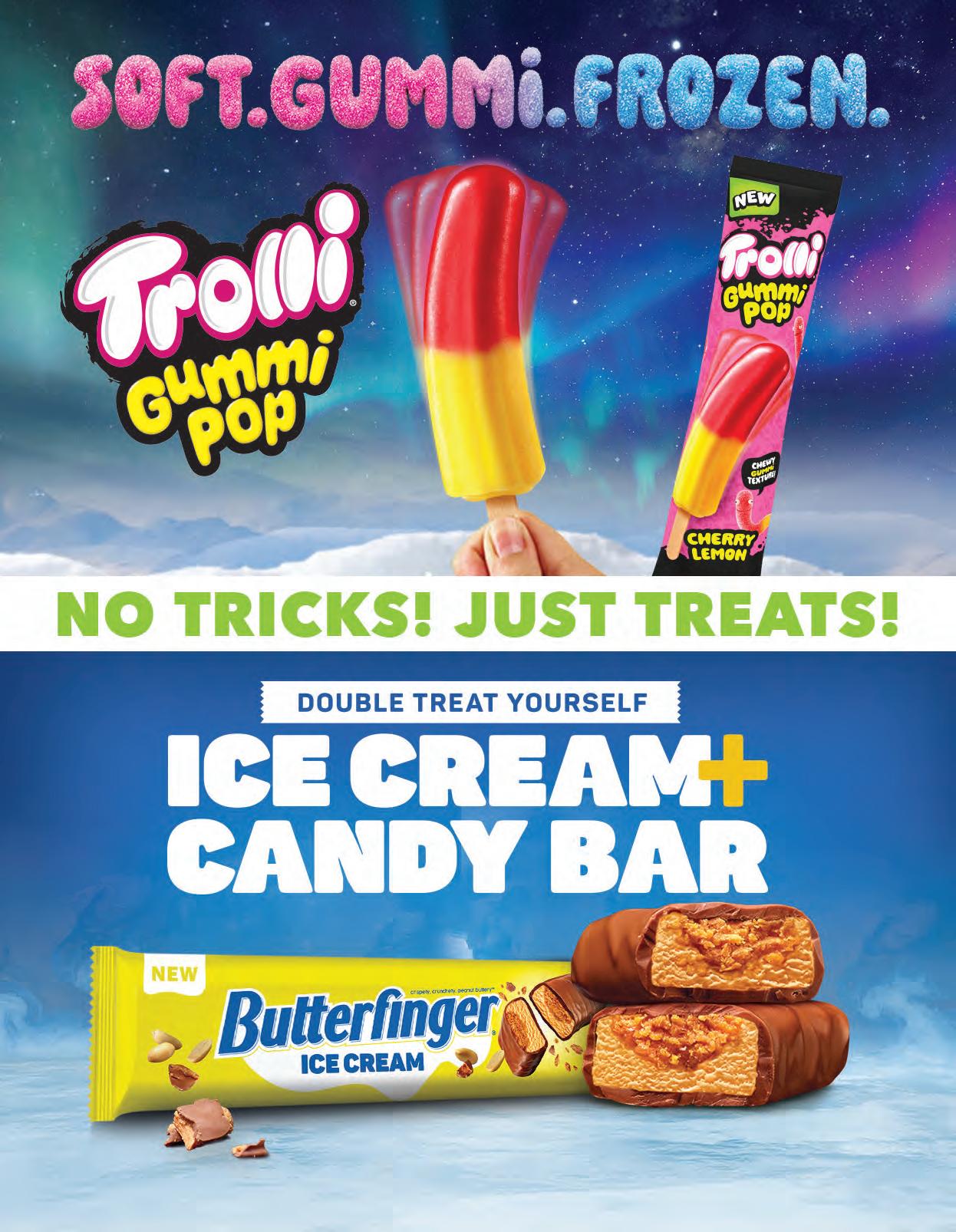
SLIN# 191402
SLIN# 191406

Rocky Mountain FOA
Holiday Party
Gaylord Rockies Resort & Convention Center
Aurora, Colorado
December 13, 2025
Phone: 719-661-1048
San Diego FOA
Holiday Party
Royal India - Miramar
San Diego, California
December 20, 2025
Phone: 619-713-2411
San Diego FOA
Winter Trade show
Four Points by Sheraton (Pavilion)
San Diego, California
January 21, 2026
Phone: 619-713-2411
Northern California FOA
NorCal United
(Central Valley FOA/ Greater Bay FOA/ Northern California FOA/ Sacramento Valley FOA) Trade Show
Sunrise Banquet Hall and Event Center
Vacaville, California
March 11, 2026
Phone: 707-344-6287
Charity Golf
Chardonnay Golf Club
American Canyon, California
March 12, 2026
Phone: 707-344-6287
Southern California FOA Trade Show
Pasadena Convention Center
Pasadena, California
March 31, 2026
Phone: 818-357-5985
Golf Tournament
Pacific Palms Resort
City of Industry, California
April 1, 2026
Phone: 818-357-5985
FOA EVENTS
Joe Saraceno FOA
3rd Annual Golf
Tournament
Brookside Golf Club
Pasadena, California
April 8, 2026
Phone: 619-726-9016
4th Annual Trade Show
Santa Anita Park
Arcadia, California
April 9, 2026
Phone: 619-726-9016
Baltimore FOA
3rd Annual Golf
Tournament
TriState Trade Show
Venue TBD
April 22, 2026
Phone: 443-506-8380
South Nev/Las Vegas FOA
Golf Tournament
Revere Golf Club
Henderson, Nevada
May 6, 2026
Phone: 714-396-1003
Trade Show
Alexis Park
Las Vegas Nevada
May 7, 2026
Phone: 714-396-1003
FOA Of Greater Los Angeles Trade Show
Ontario Convention Center
Ontario, California
May 6, 2026
Phone: 562-567-1660
Annual Golf Tournament
Black Gold Golf Club
Yorba Linda, California
May 7, 2026
Phone: 562-567-1660
Chicagoland FOA
Charity Golf Outing
Venue TBD
May 13, 2026
Phone: 847-595-1596
Summer Expo
Venue TBD
May 14, 2026
Phone: 847-595-1596
Midwest FOA
Golf Outing
Venue TBD
May 27, 2026
Phone: 847-971-9457
Trade Show
Venue TBD
May 28, 2026
Phone: 847-971-9457
South Texas FOA Trade Show
Canyon Golf Course
San Antonio, Texas
June 8, 2026
Phone: 623-533-2485
Charity Golf Tournament
Canyon Golf Course
San Antonio, Texas
June 9, 2026
Phone: 623-533-2485
San Diego FOA
Annual Charity
Golf Tournament
Rancho Bernardo Inn
San Diego, California
June 10, 2026
Phone: 619-713-2411
Chesapeake Division FOA Trade Show
Hotel Belvoir Springfield (Hilton)
Springfield, Virgina
June 11, 2026
Phone: 571-344-2781
San Fran/Monterey Bay FOA
Golf Tournament
Cinnabar Hills Golf Club
San Jose, California
June 16, 2026
Phone: 510-289-4948
Trade Show
Paradise Ballrooms: Banquet
Hall & Event Center
Fremont, California
June 17, 2026
Phone: 510-289-4948
Rocky Mountain FOA
Golf Tournament
Venue TBD
June 23, 2026
Phone: 719-661-1048
Trade Show
Venue TBD
June 24, 2026
Phone: 719-661-1048
Delaware Valley FOA
Trade Show
Venue TBD
July 1, 2026
Phone: 215-852-4738
Chicagoland FOA
Annual Picnic
Venue TBD
July 19, 2026
Phone: 847-595-1596
San Diego FOA
Trade Show & Vendor Party
AleSmith Brewing Company
San Diego, California
October 8, 2026
Phone: 619-672-1376
Chicagoland FOA
Winter Expo
Venue TBD
November 12, 2026
Phone: 847-595-1596
Midwest FOA
Holiday Show
Venue TBD
December 2, 2026
Phone: 847-971-9457
San Diego FOA
Annual Charity Golf Tournament
Rancho Bernardo Inn
San Diego, California
June 9, 2027
Phone: 619-713-2411
NCASEF BOARD MEETINGS
National Coalition Affiliate Meeting
Hyatt Regency Miami Miami, Florida
November 11-12, 2025
National Coalition
Board Of Directors Meeting
Hyatt Regency Miami Miami, Florida
November 13-14, 2025
NCASEF Board meetings are scheduled one per quarter. For information on Board Meeting sponsorship opportunities, please contact the National Office at 855-444-7711 or nationaloffice@ncasef.com
National Coalition Affiliate Meeting
The Westin Resort & Spa Puerto Vallarta
Puerto Vallarta, Mexico
February 3-4, 2026
National Coalition Board of Directors Meeting
The Westin Resort & Spa Puerto Vallarta
Puerto Vallarta, Mexico
February 5-6, 2026
National Coalition Affiliate Meeting
Fairmont Olympic Hotel
Seattle, Washington April 28-29, 2026
FOA EVENTS
Chicagoland FOA
Winter Expo
Venue TBD
November 13, 2025
Phone: 847-595-1596
Metro New
Jersey FOA
Annual Holiday Party
The Grand Marquis
Old Bridge, New Jersey
November 22, 2025
Phone: 732-910-8854
Southern California
FOA
Holiday Party
Saint Sava Serbian Orthodox Church of San Gabriel
San Gabriel, California
November 29, 2025
Phone: 626-255-8555
Midwest FOA
Holiday Show
Venue TBD
December 3, 2025
Phone: 847-971-9457
Michigan FOA
Holiday Party Venue TBD
December 4, 2025
Phone: 517-219-5288
Northern California
FOA NorCal United (Central Valley FOA/ Greater Bay FOA/ Northern California FOA/ Sacramento Valley FOA)
Holiday Party Venue TBD
December 5, 2025
Phone: 707-344-6287
National Coalition Board of Directors Meeting
Fairmont Olympic Hotel
Seattle, Washington
April 30-May 1, 2026
National Coalition Board of Directors Meeting
New York Marriott Marquis
New York, New York
July 21, 2026
MARK YOUR CALENDAR! NCASEF 50th Annual Convention & Trade Show
The Javits Center
New York, New York
July 21-24, 2026





DO THE WORM









is the

21.9M viewers are expected for the 2026 Winter Olympics**


BOWL

THE OLYMPIC WINTER GAMES MILANO CORTINA 2026
